The document discusses various techniques for web crawling and focused web crawling. It describes the functions of web crawlers including web content mining, web structure mining, and web usage mining. It also discusses different types of crawlers and compares algorithms for focused crawling such as decision trees, neural networks, and naive bayes. The goal of focused crawling is to improve precision and download only relevant pages through relevancy prediction.

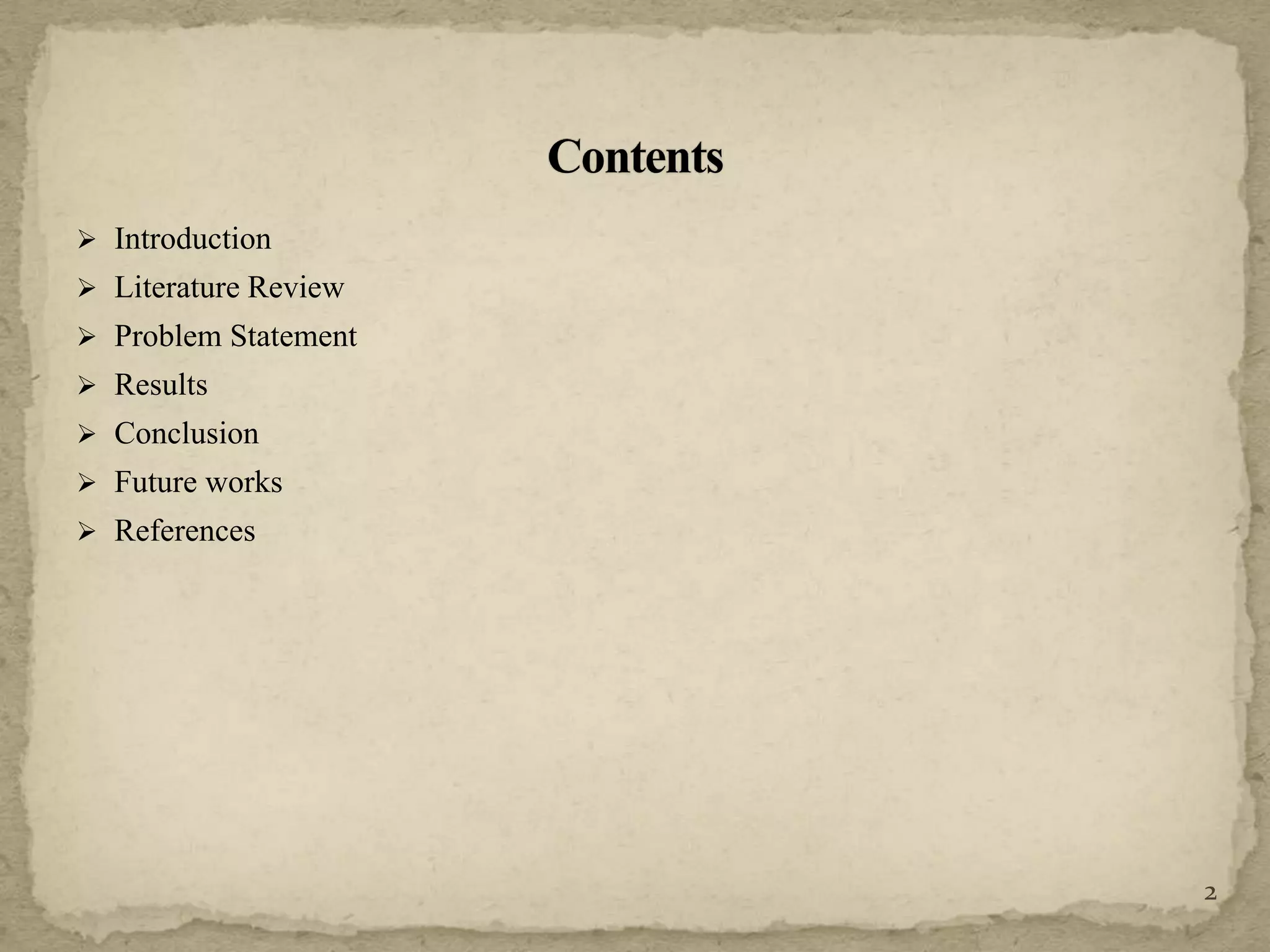
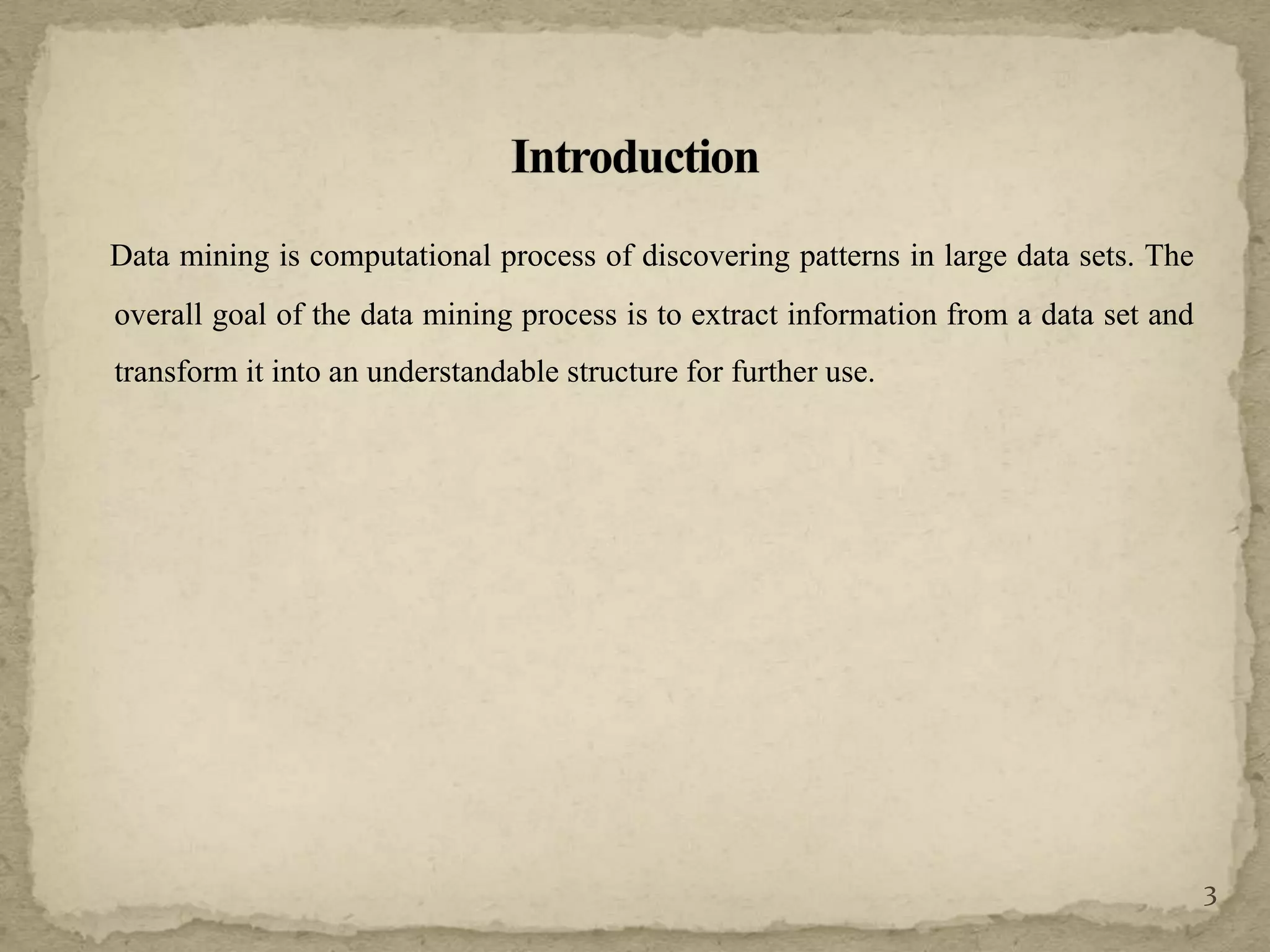
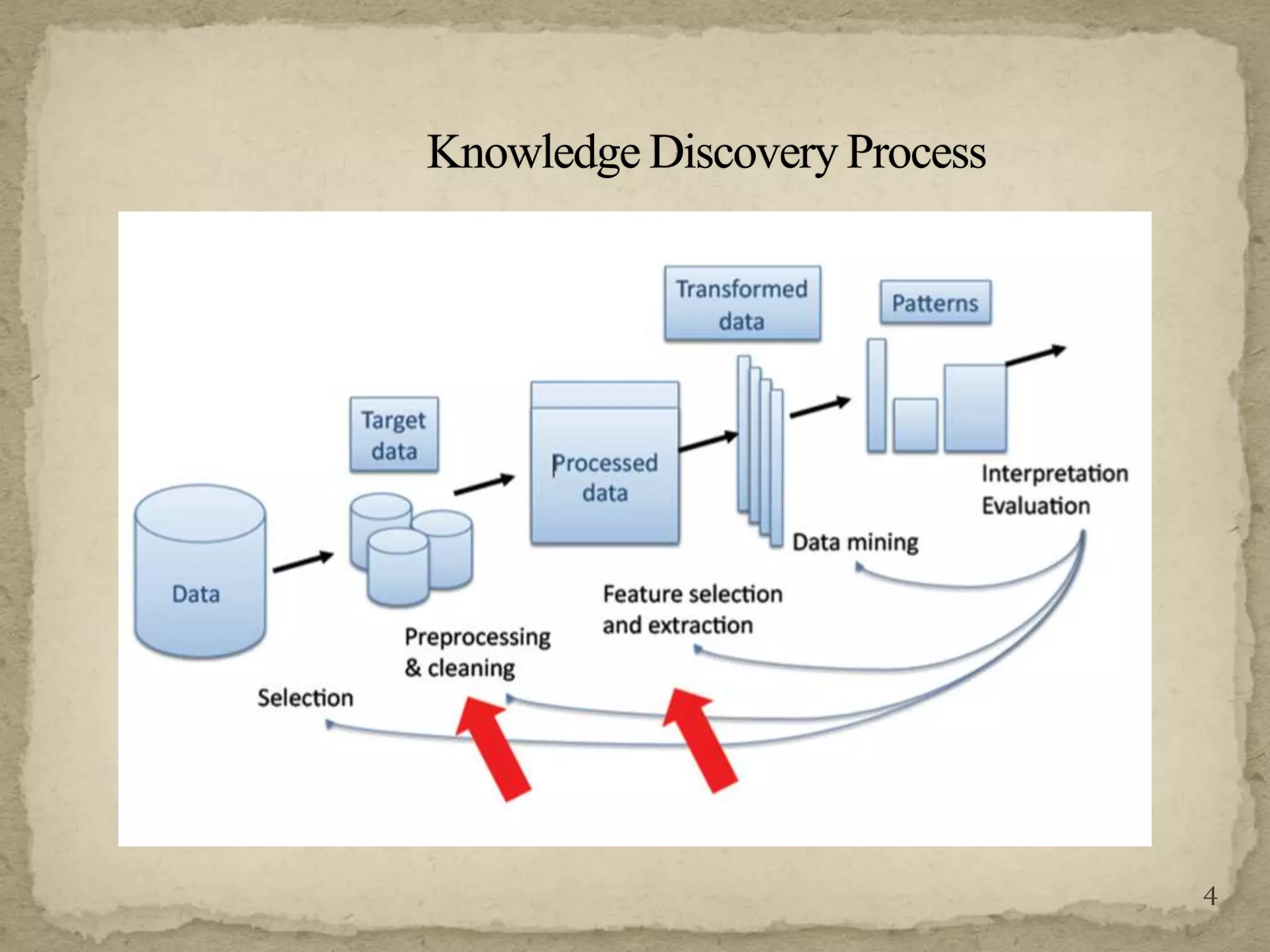
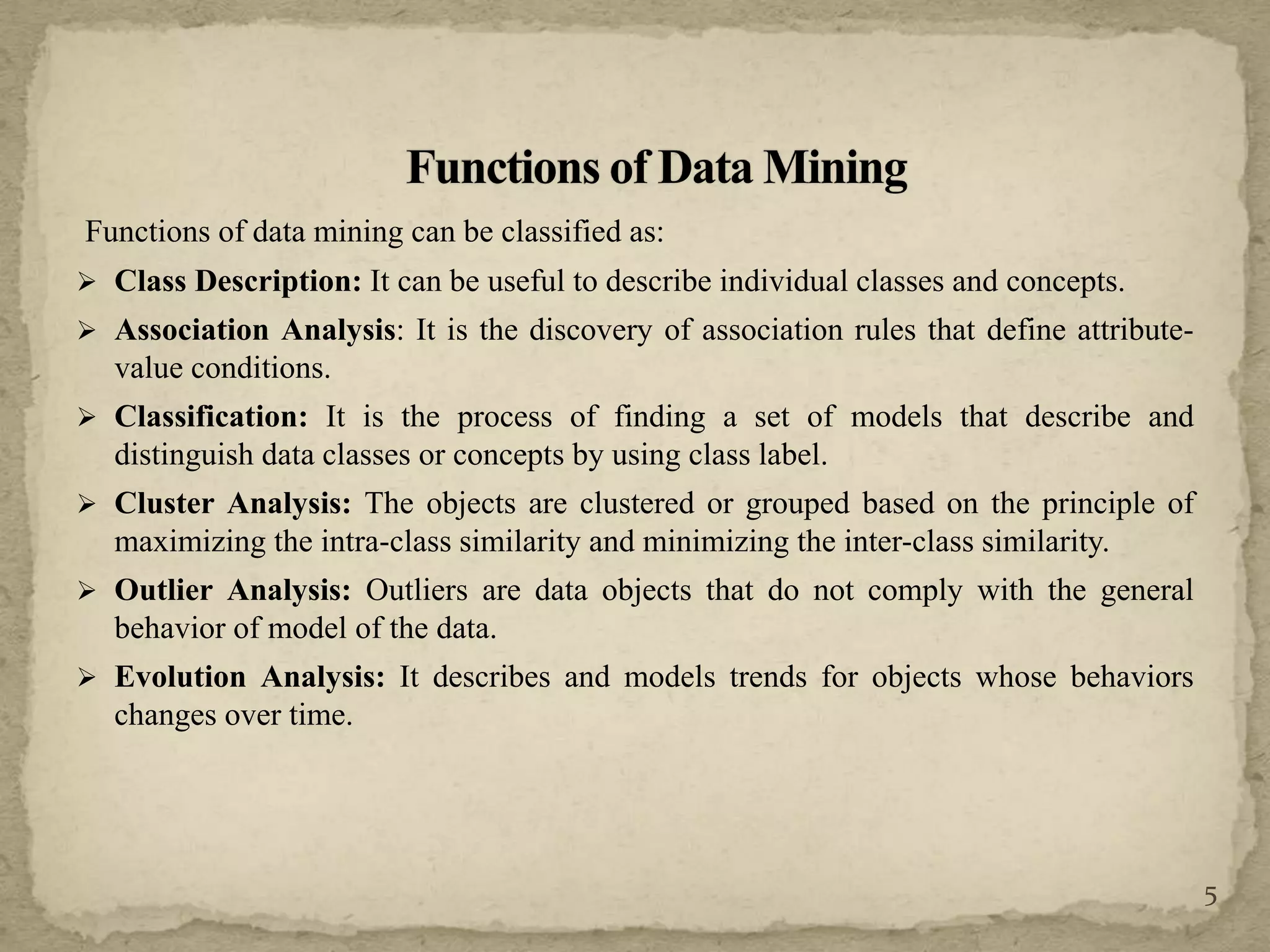
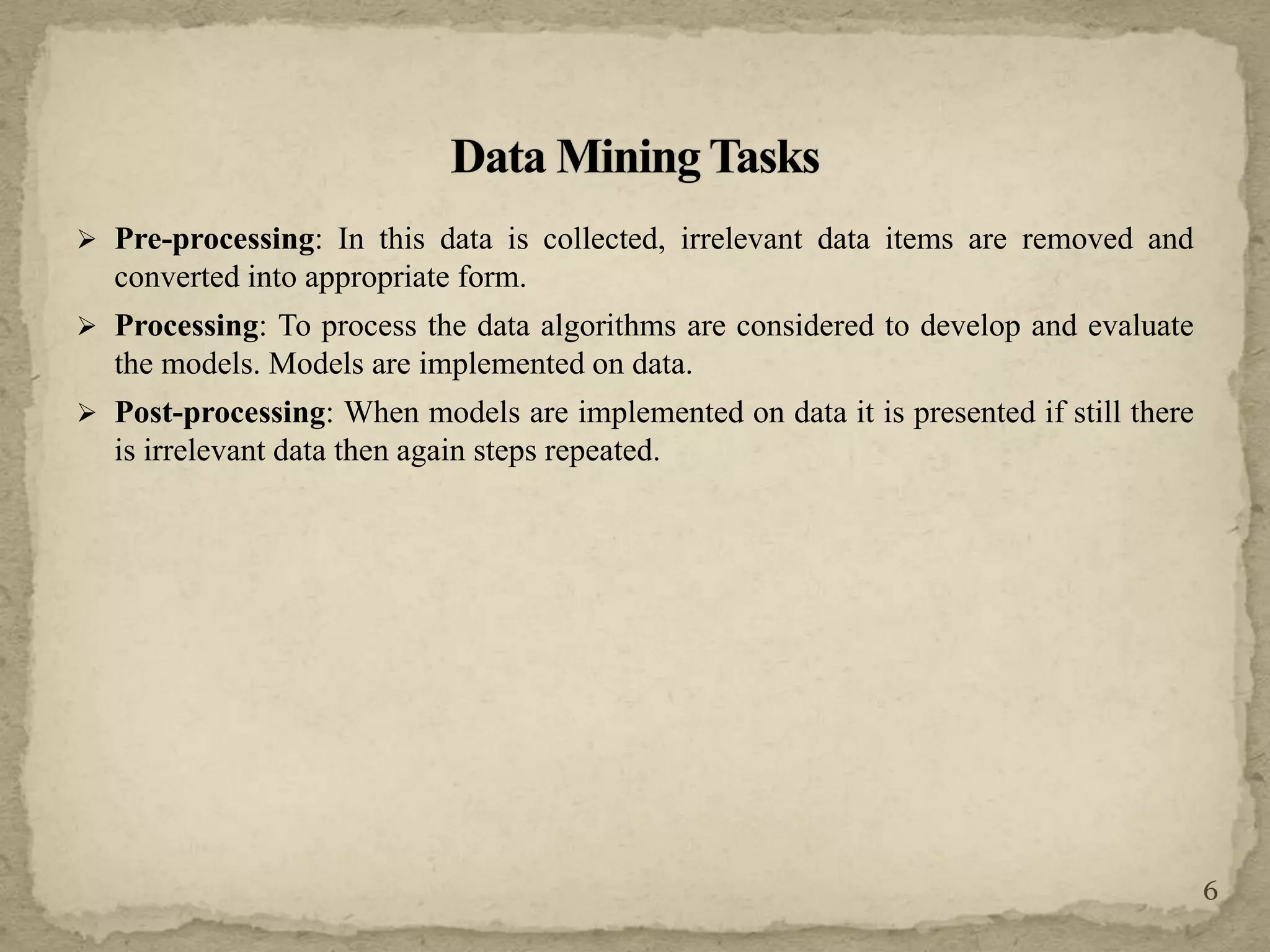
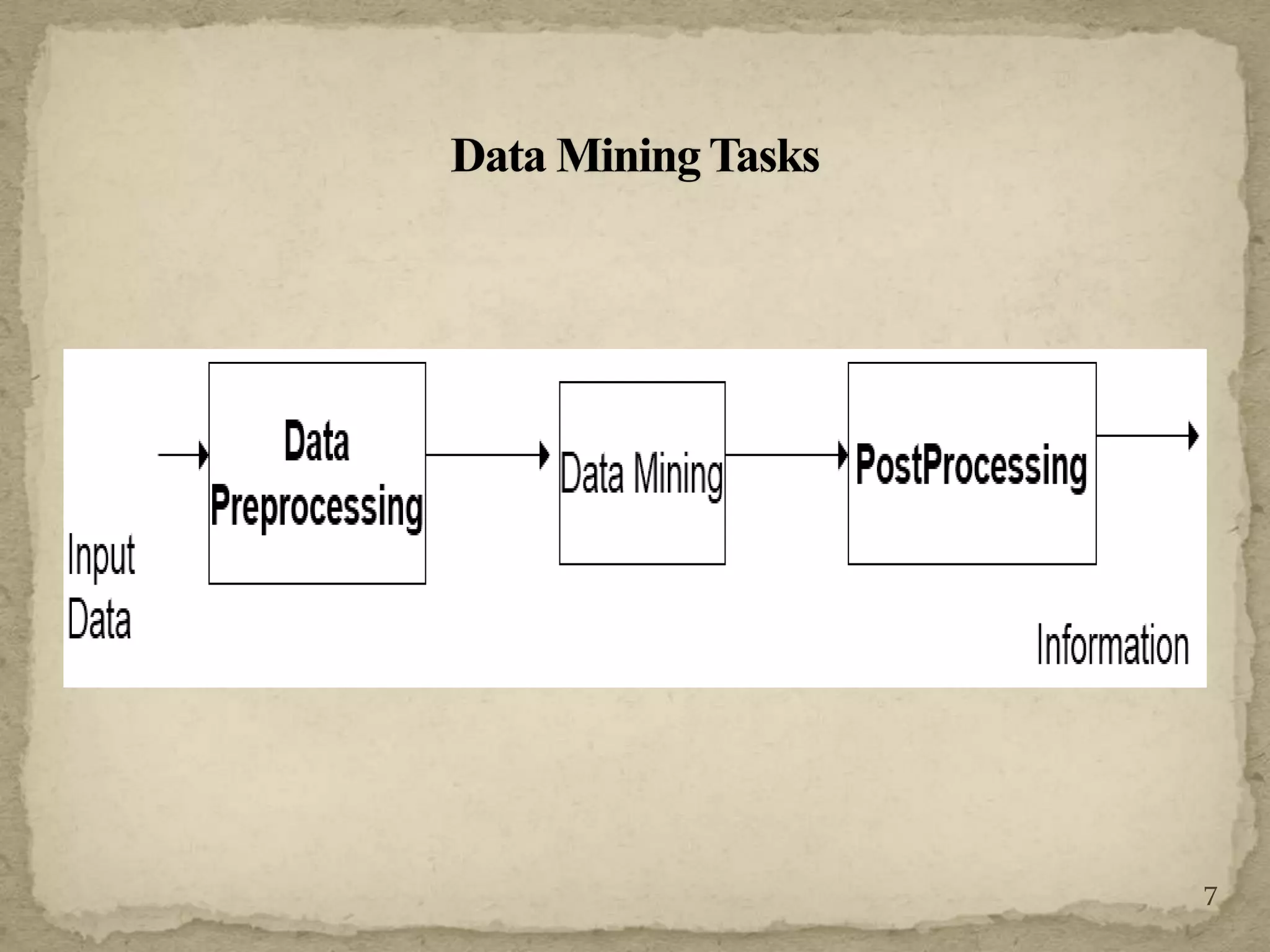
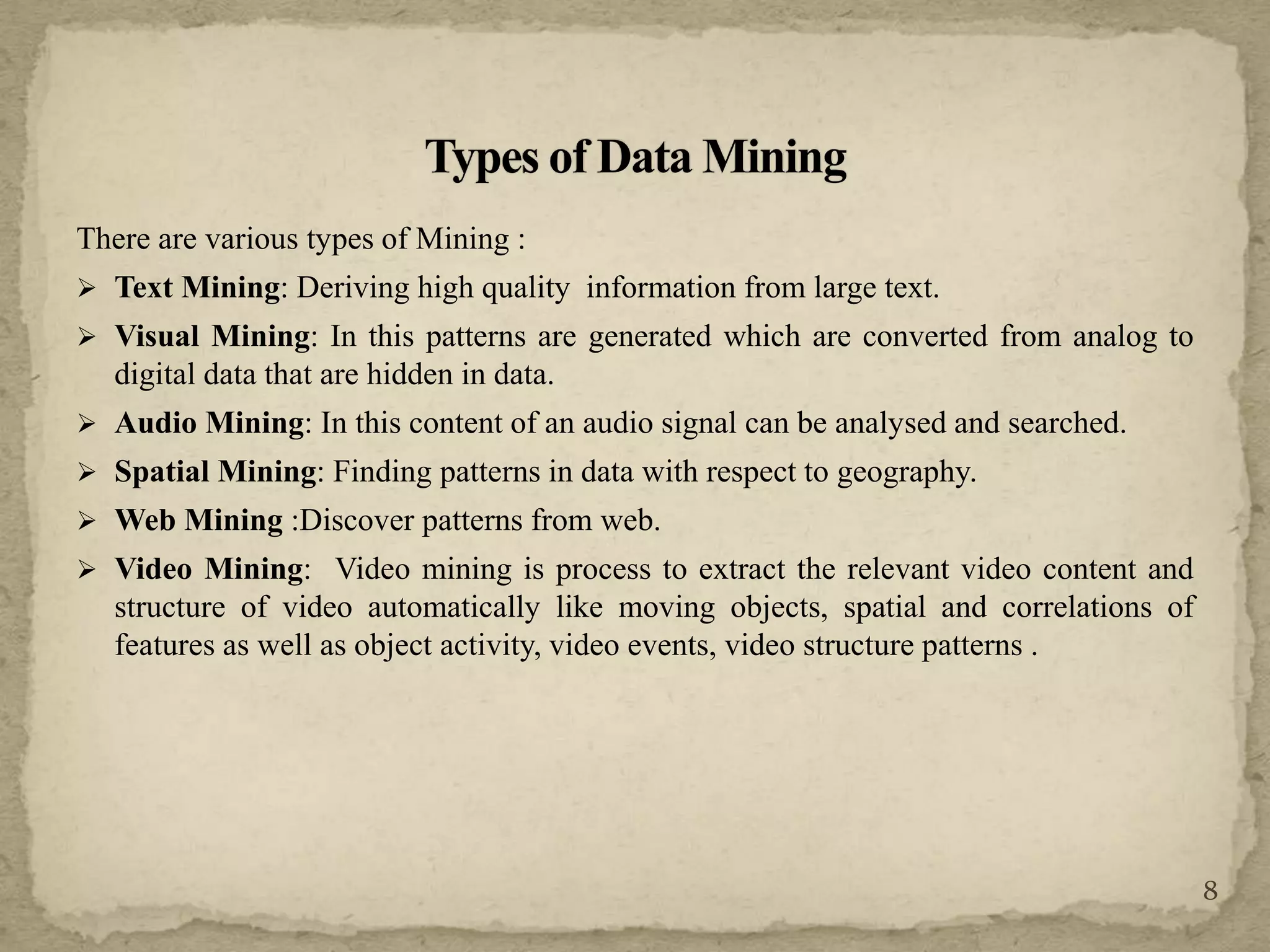
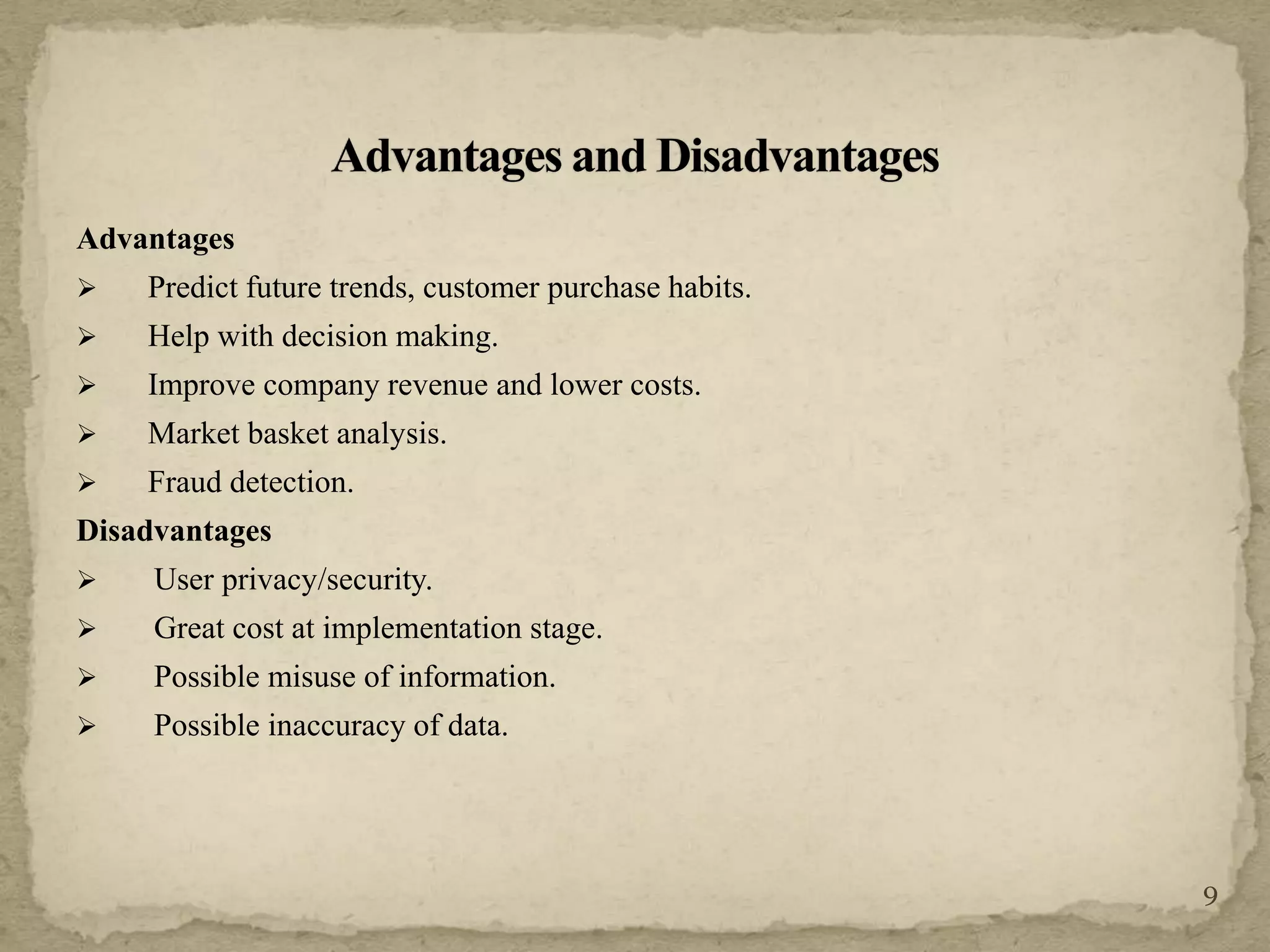
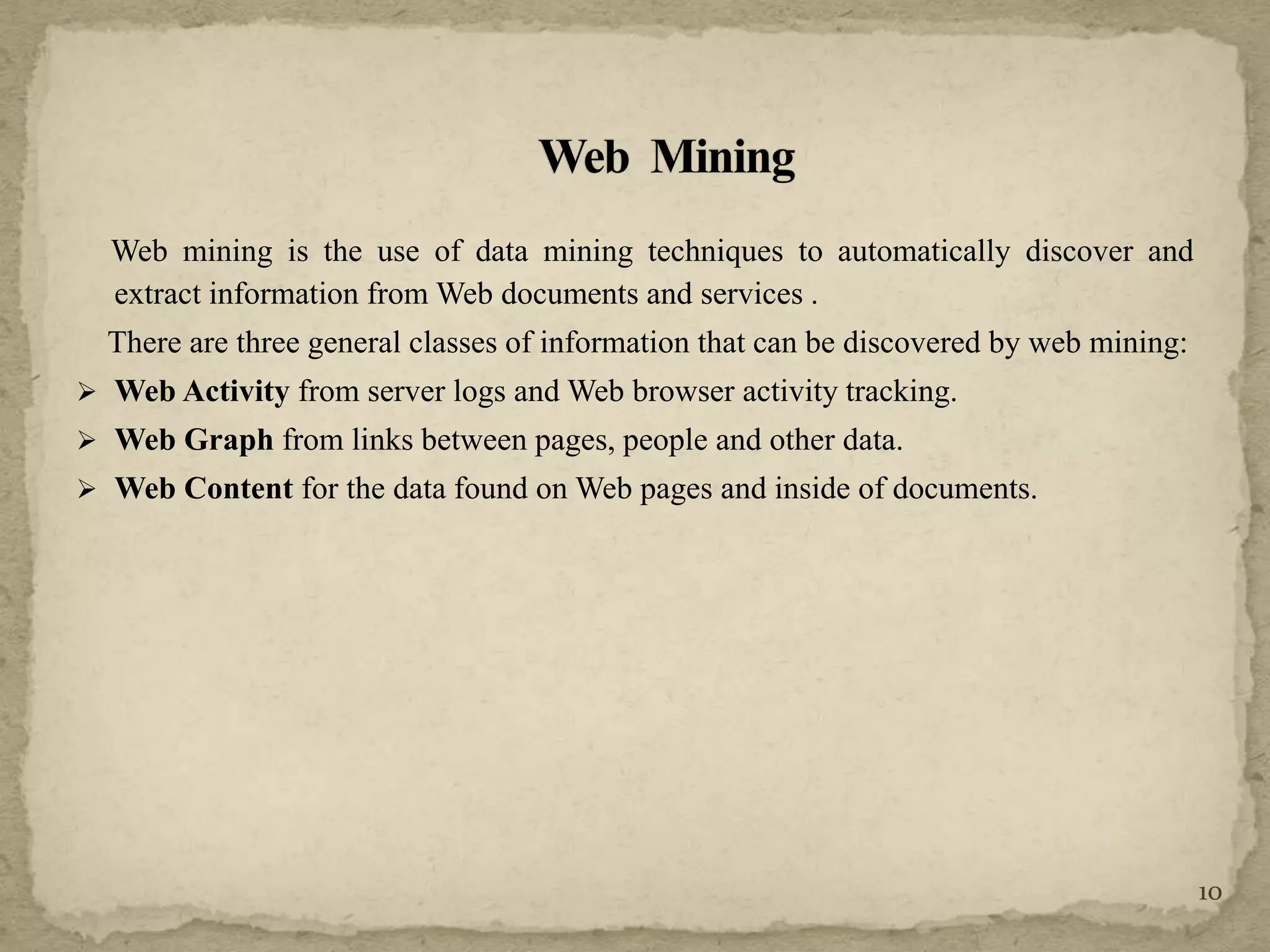
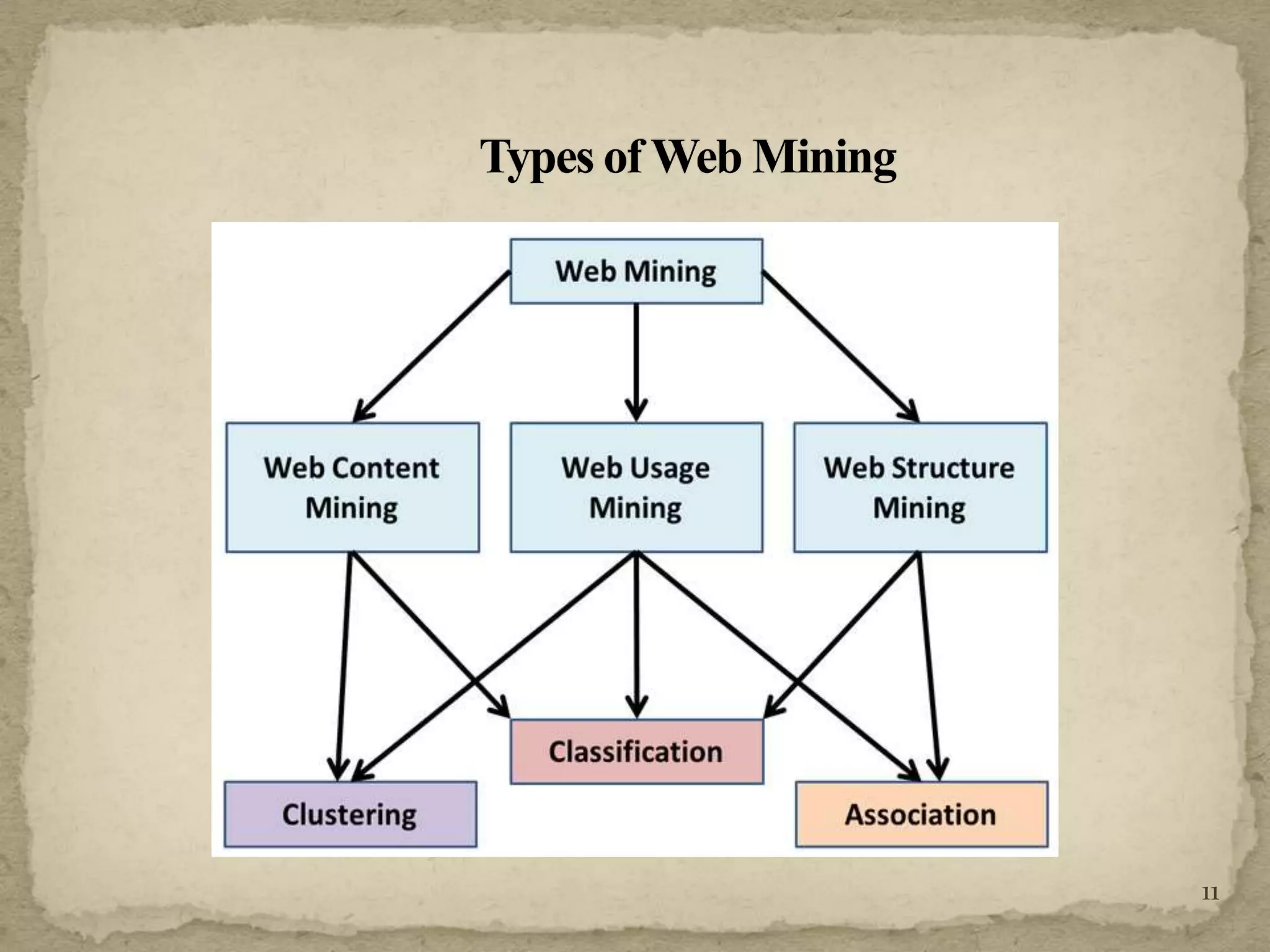
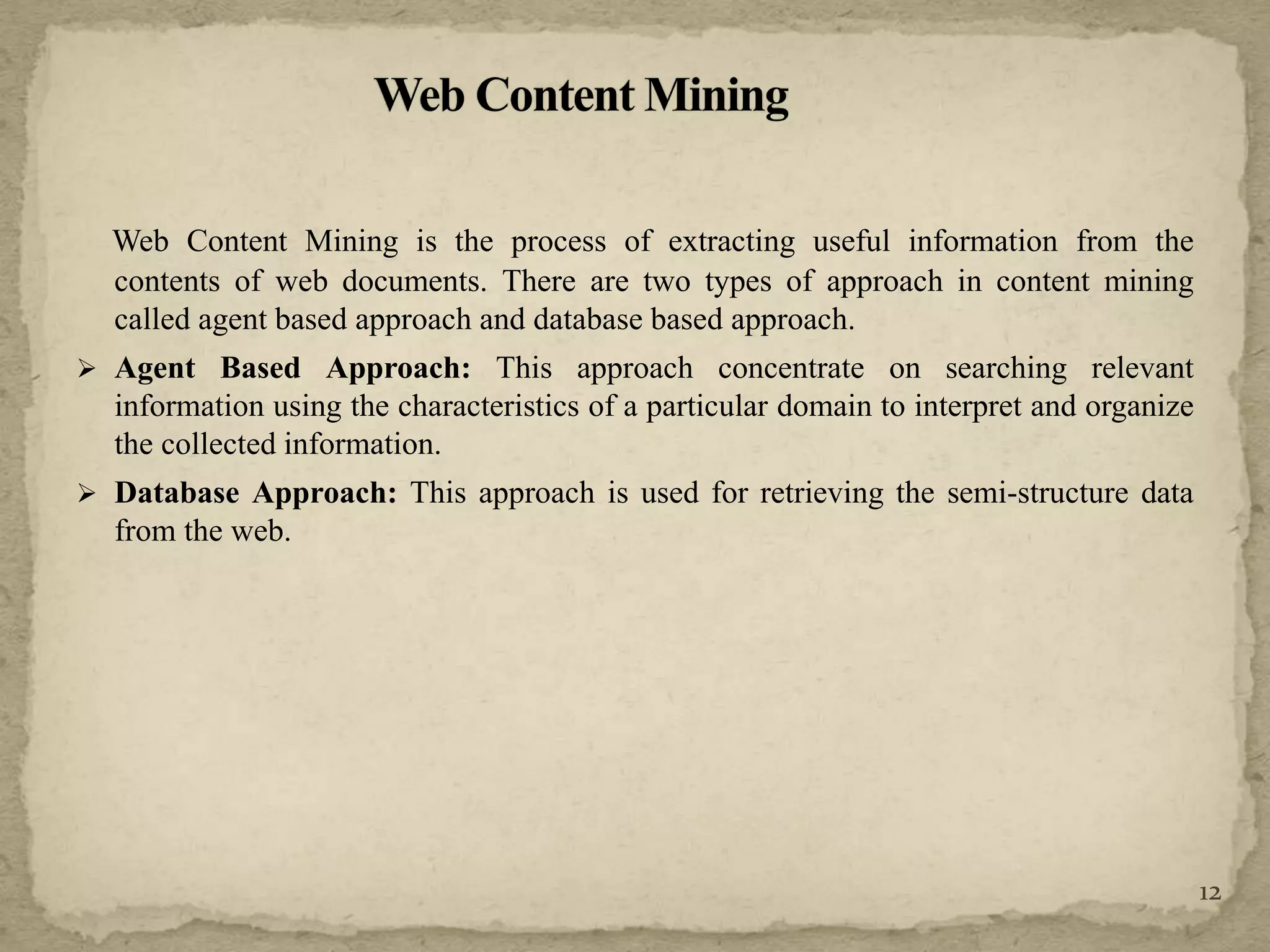
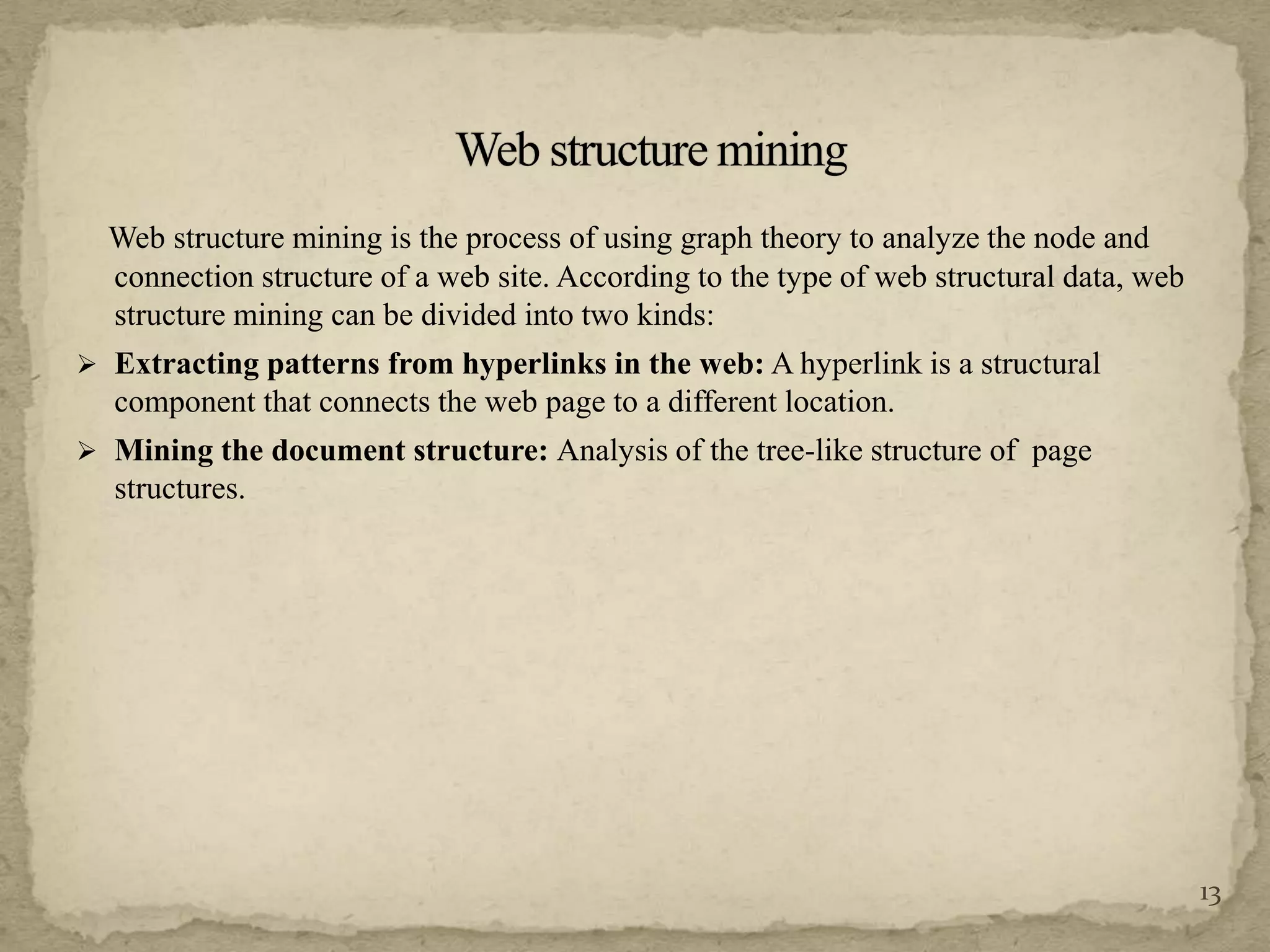
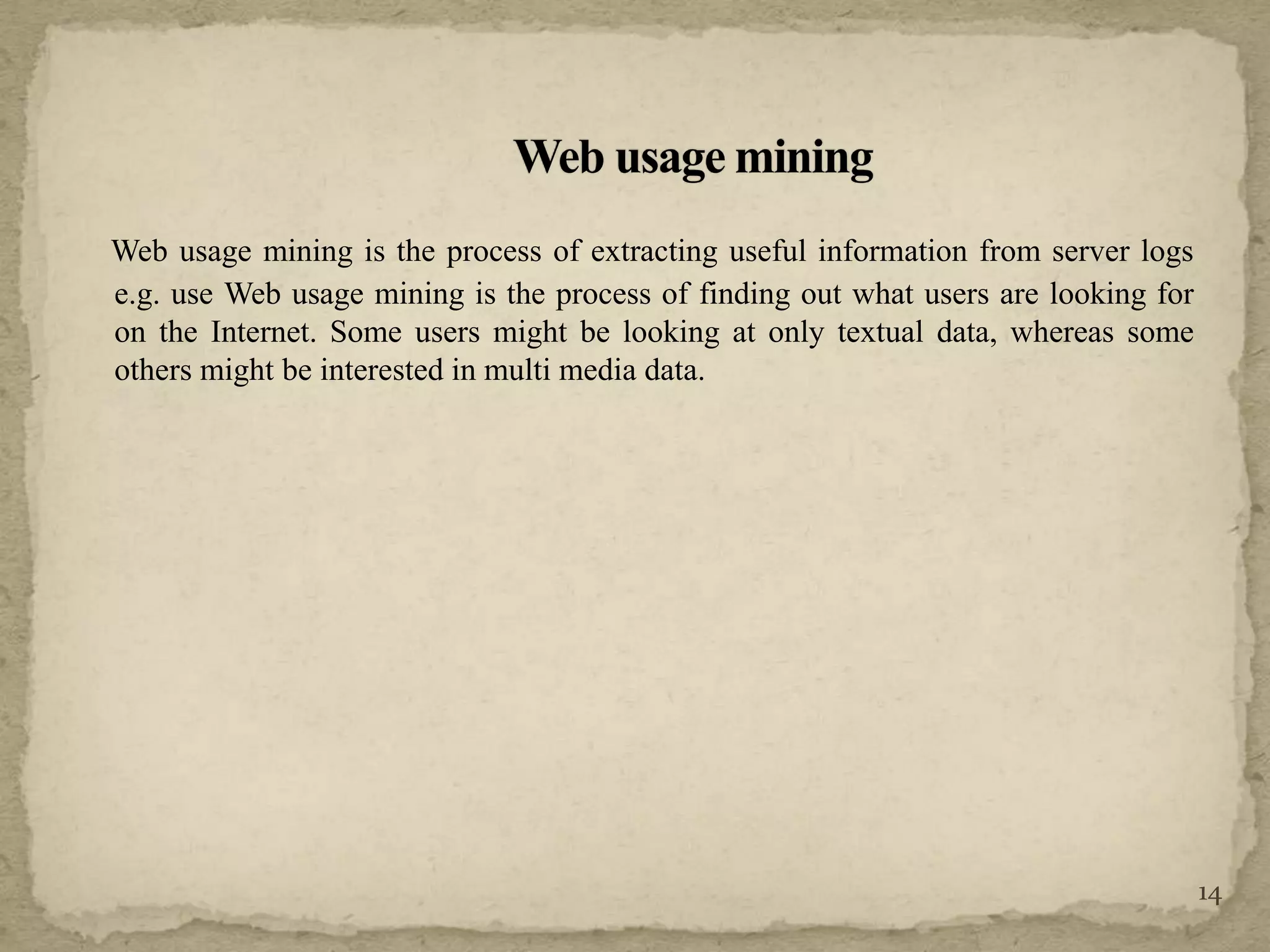
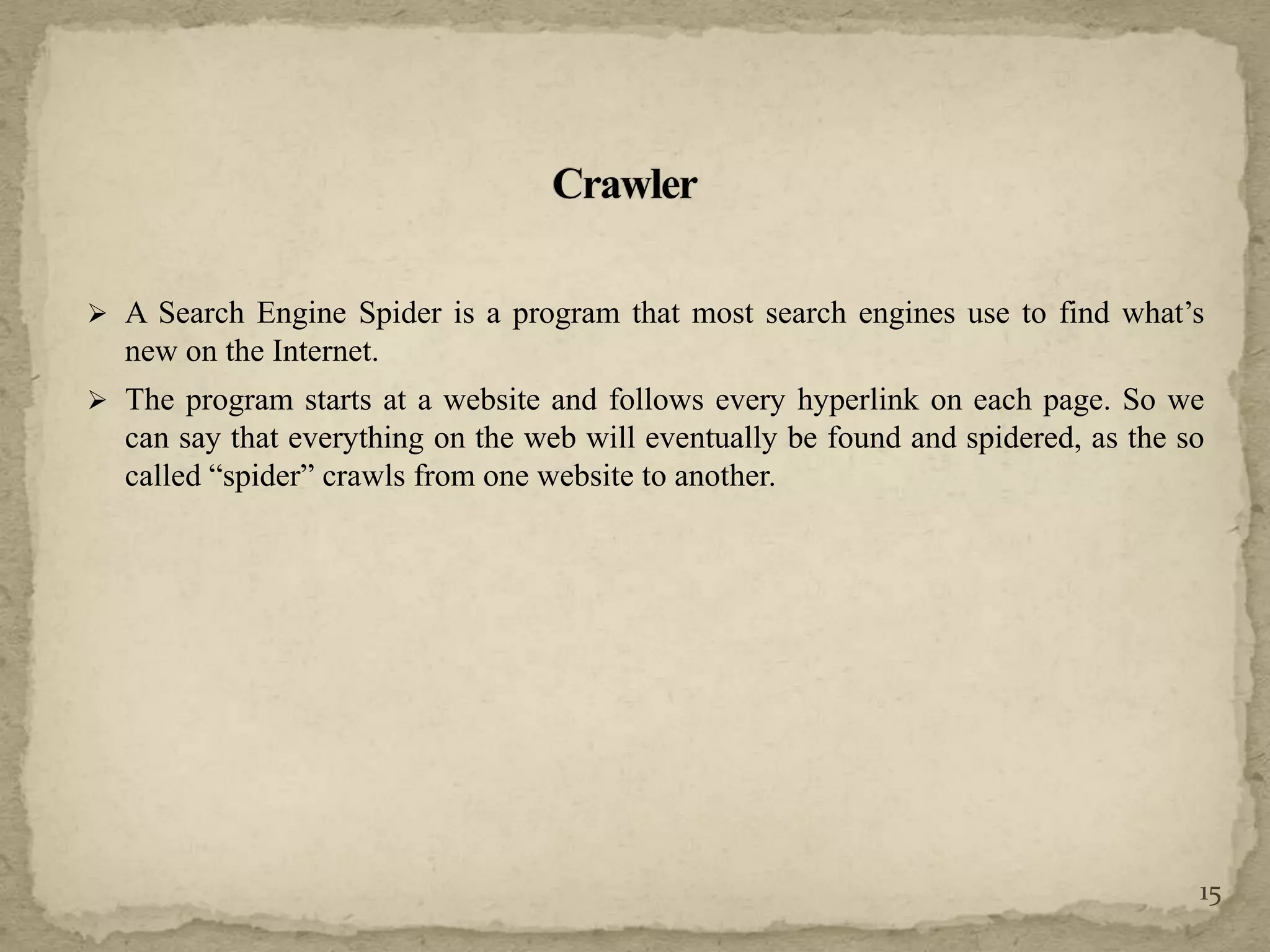
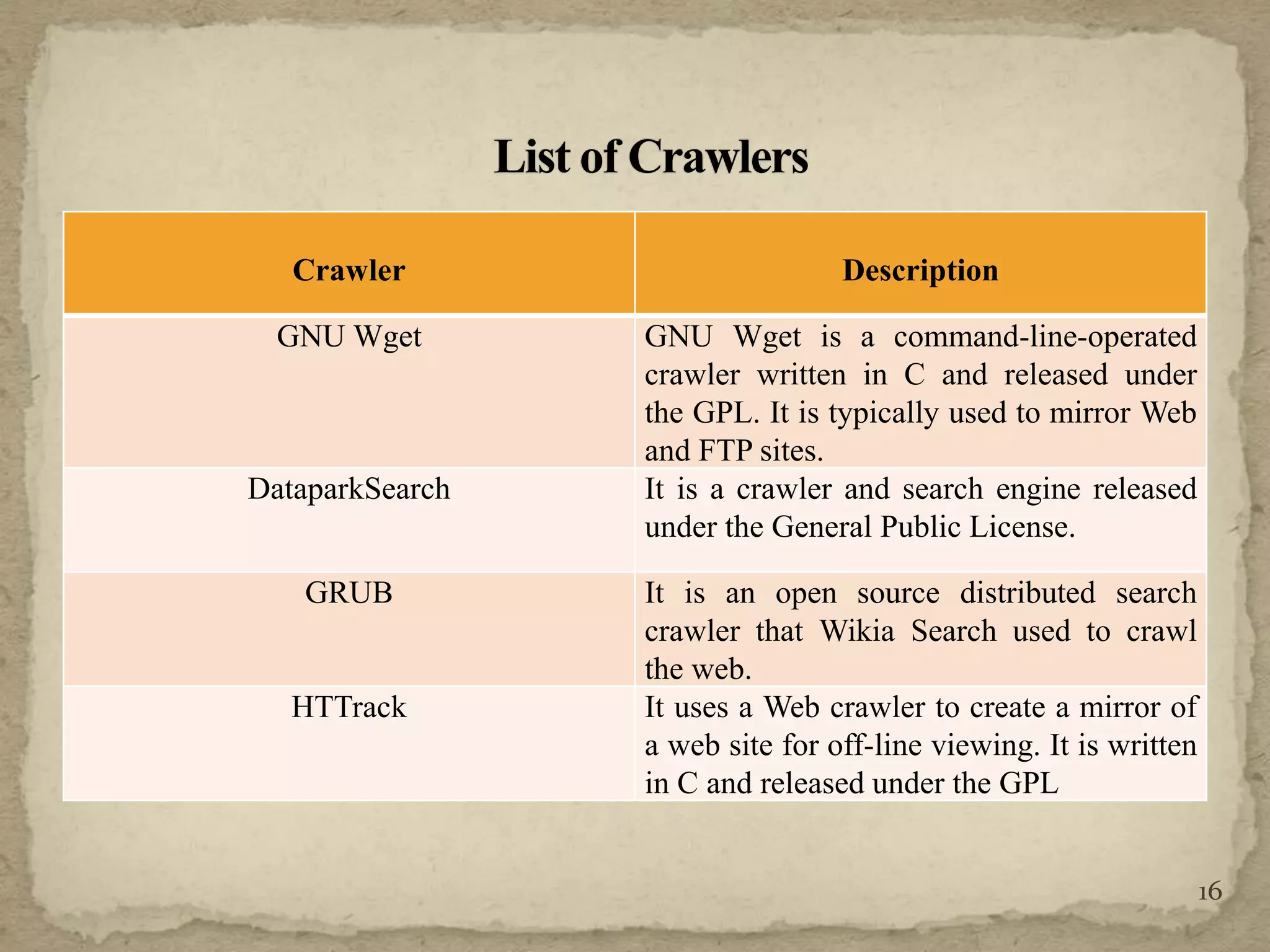

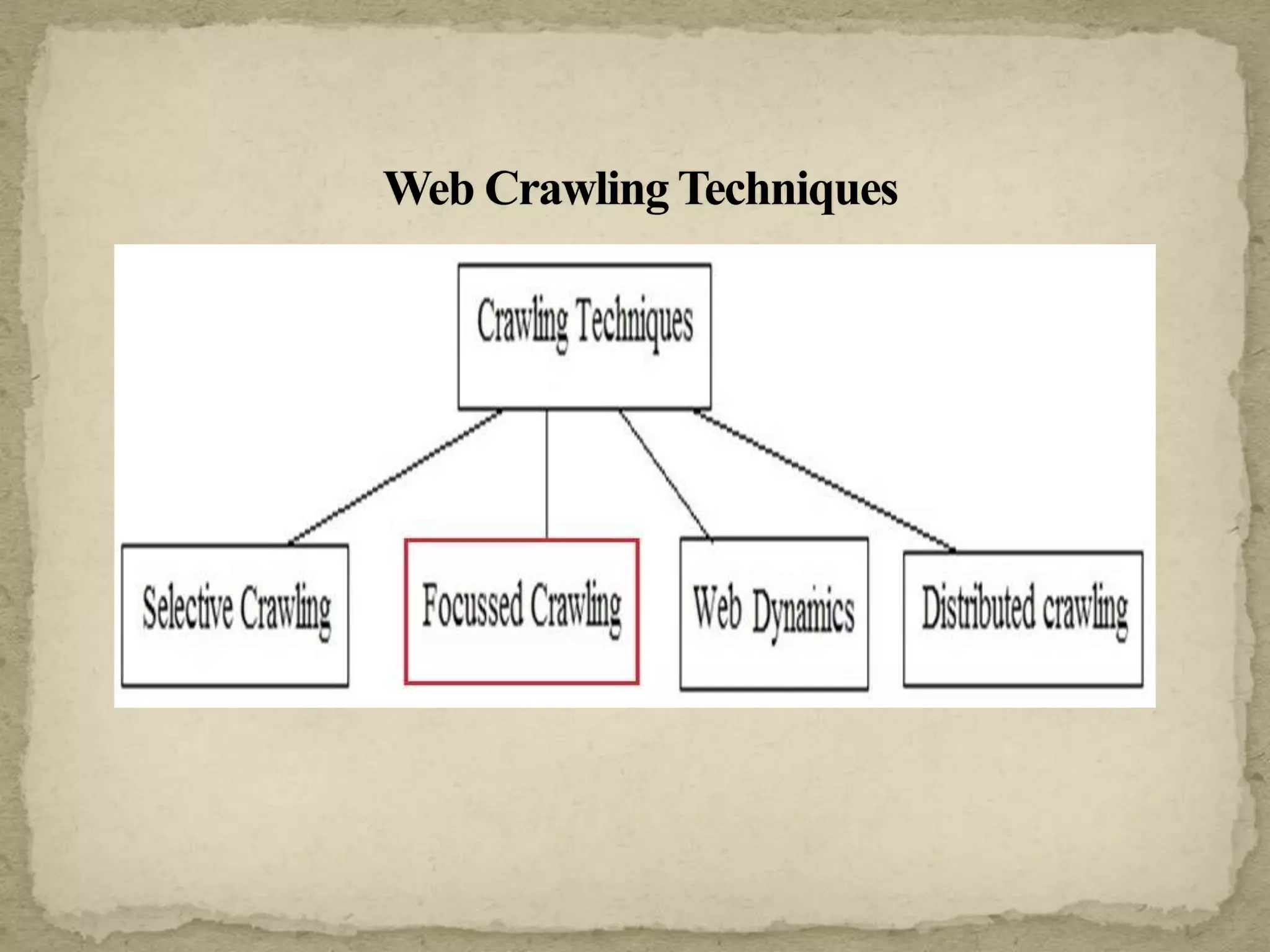
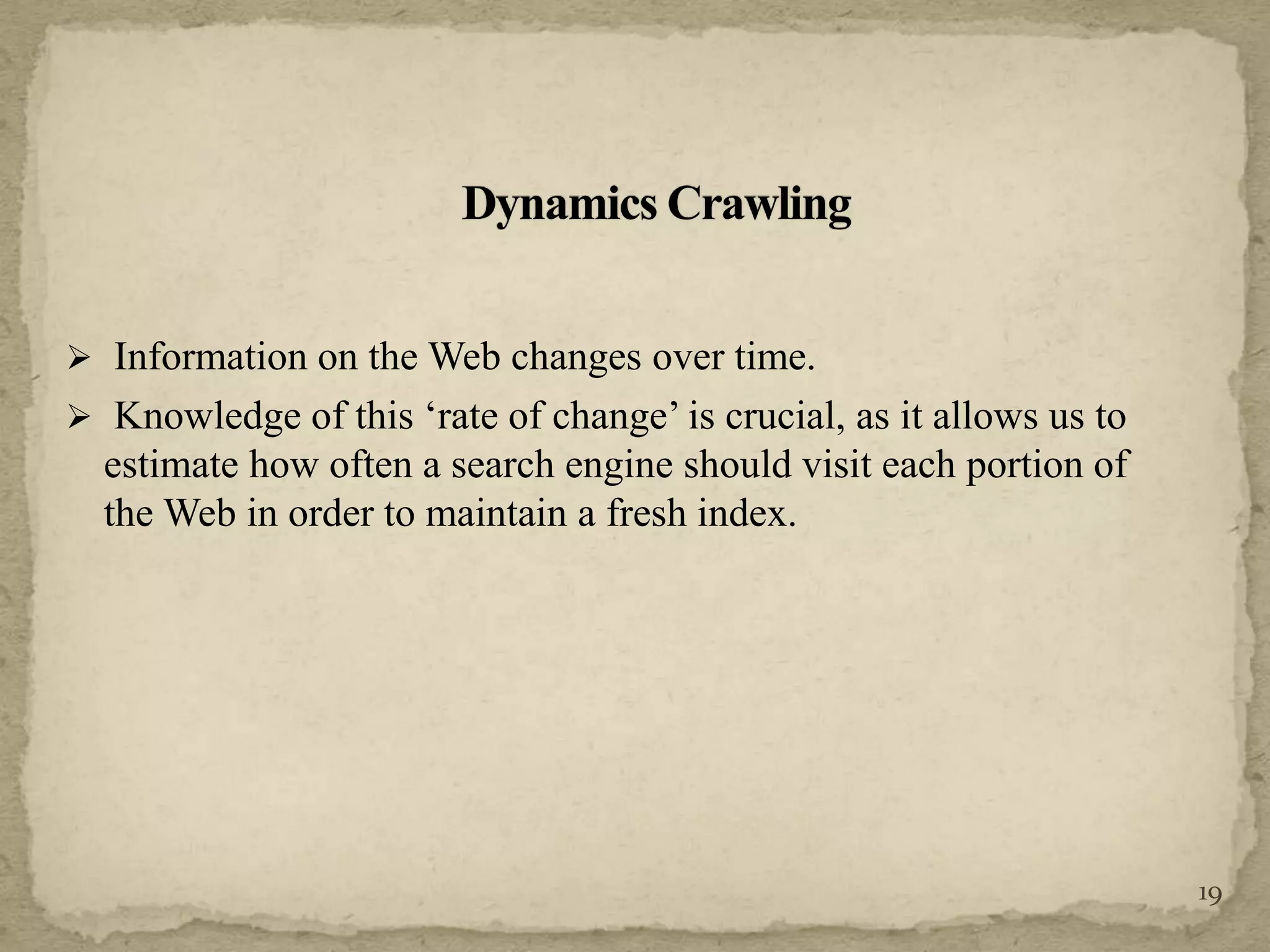
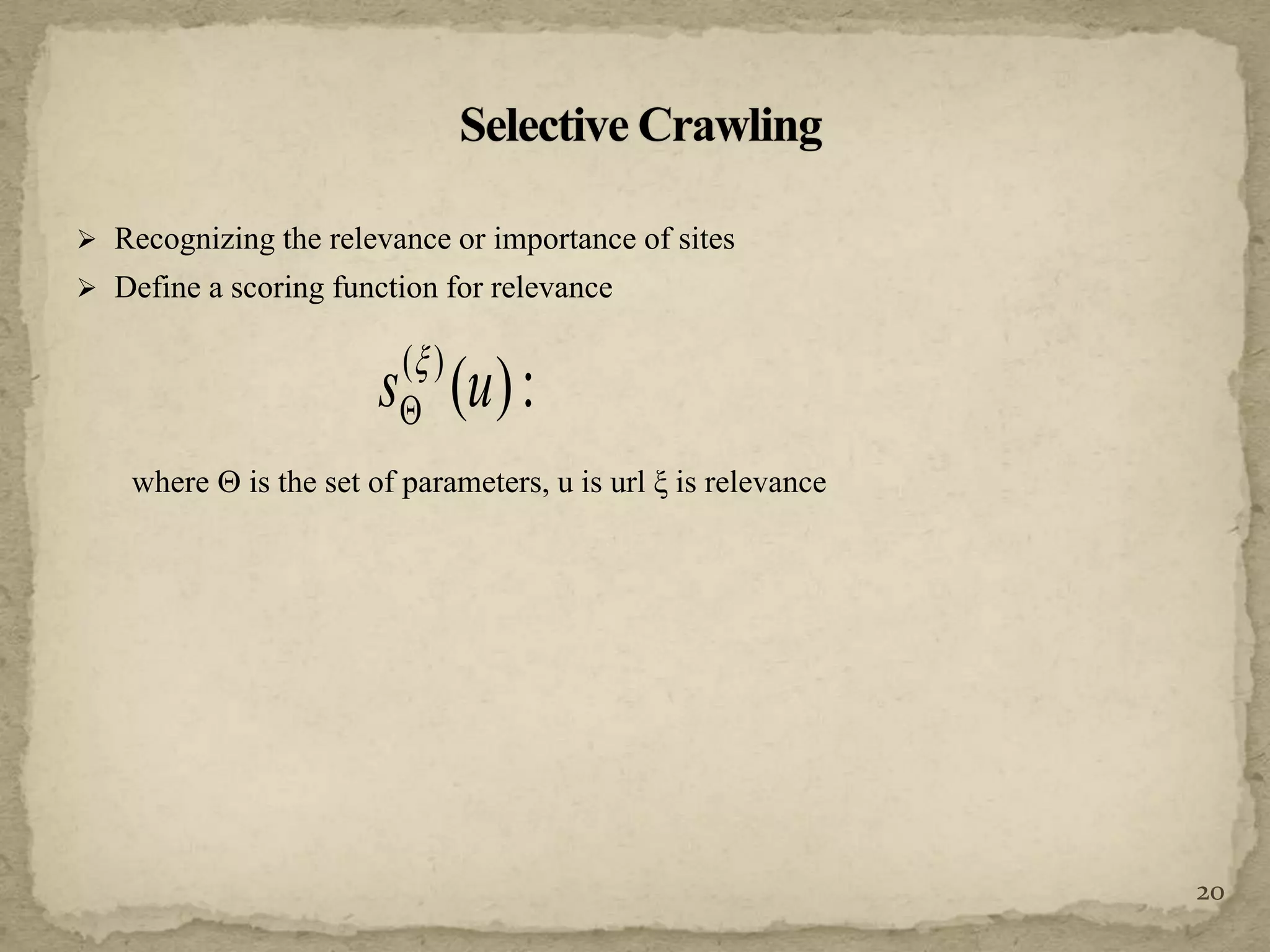
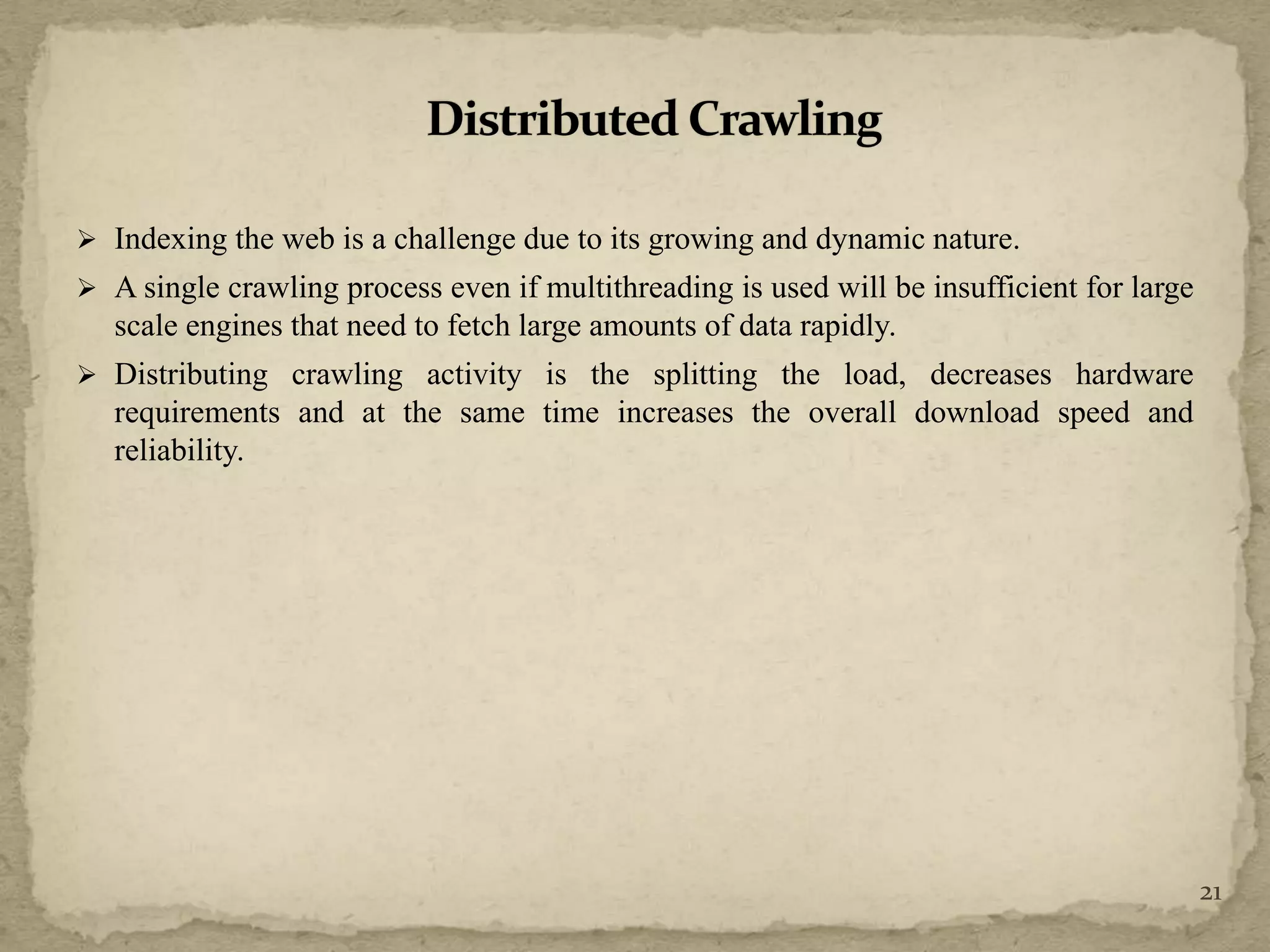
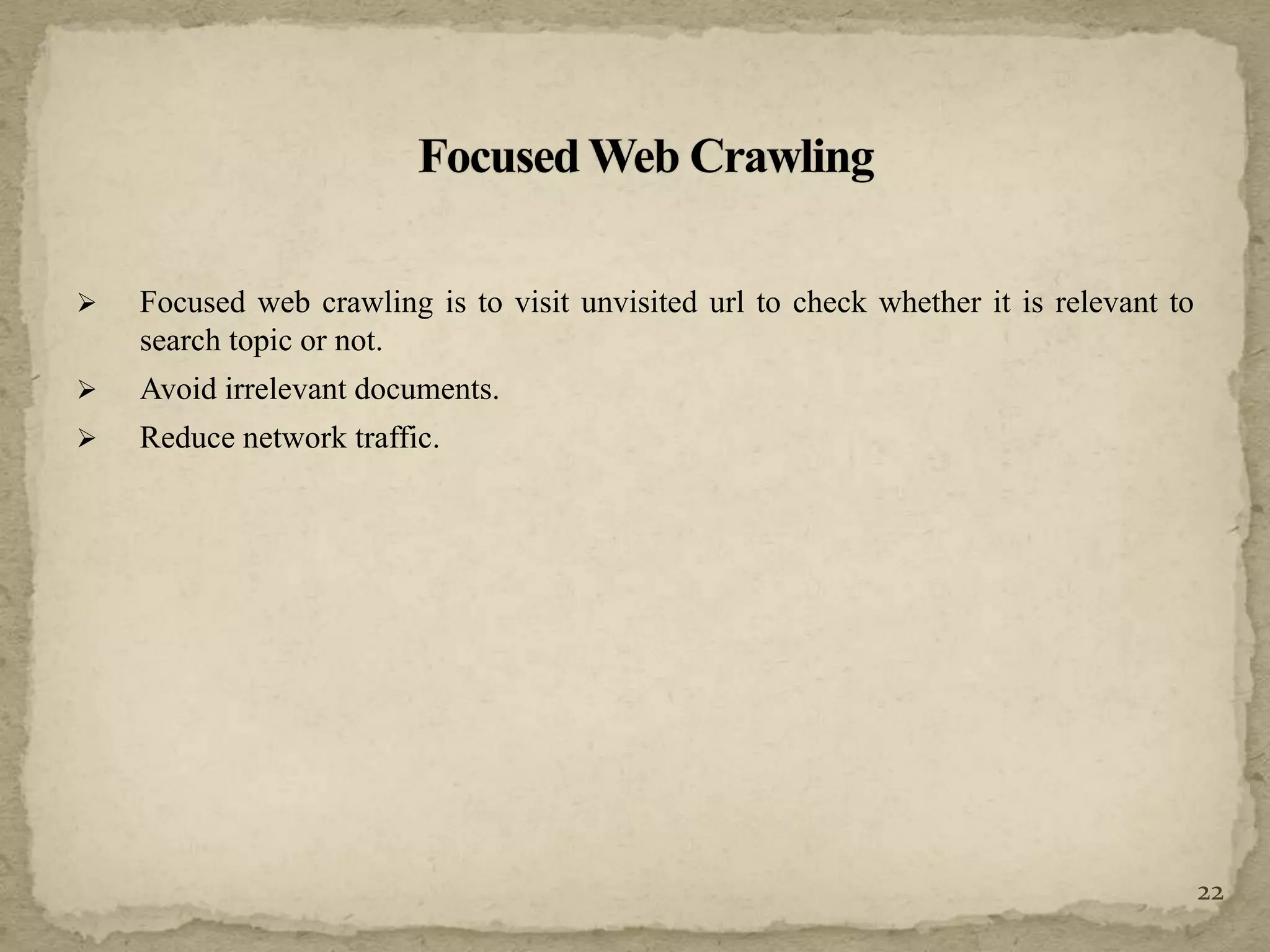
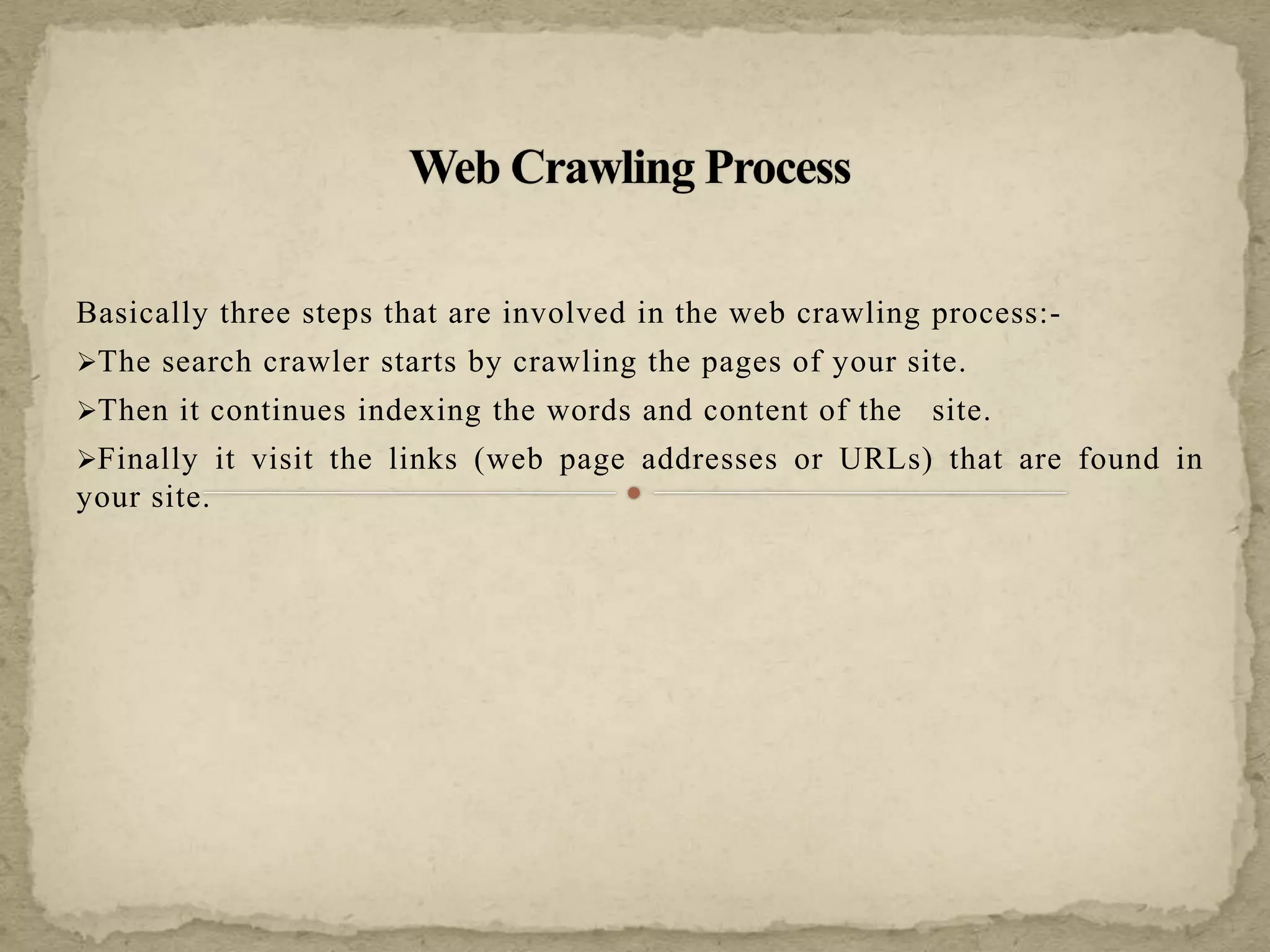
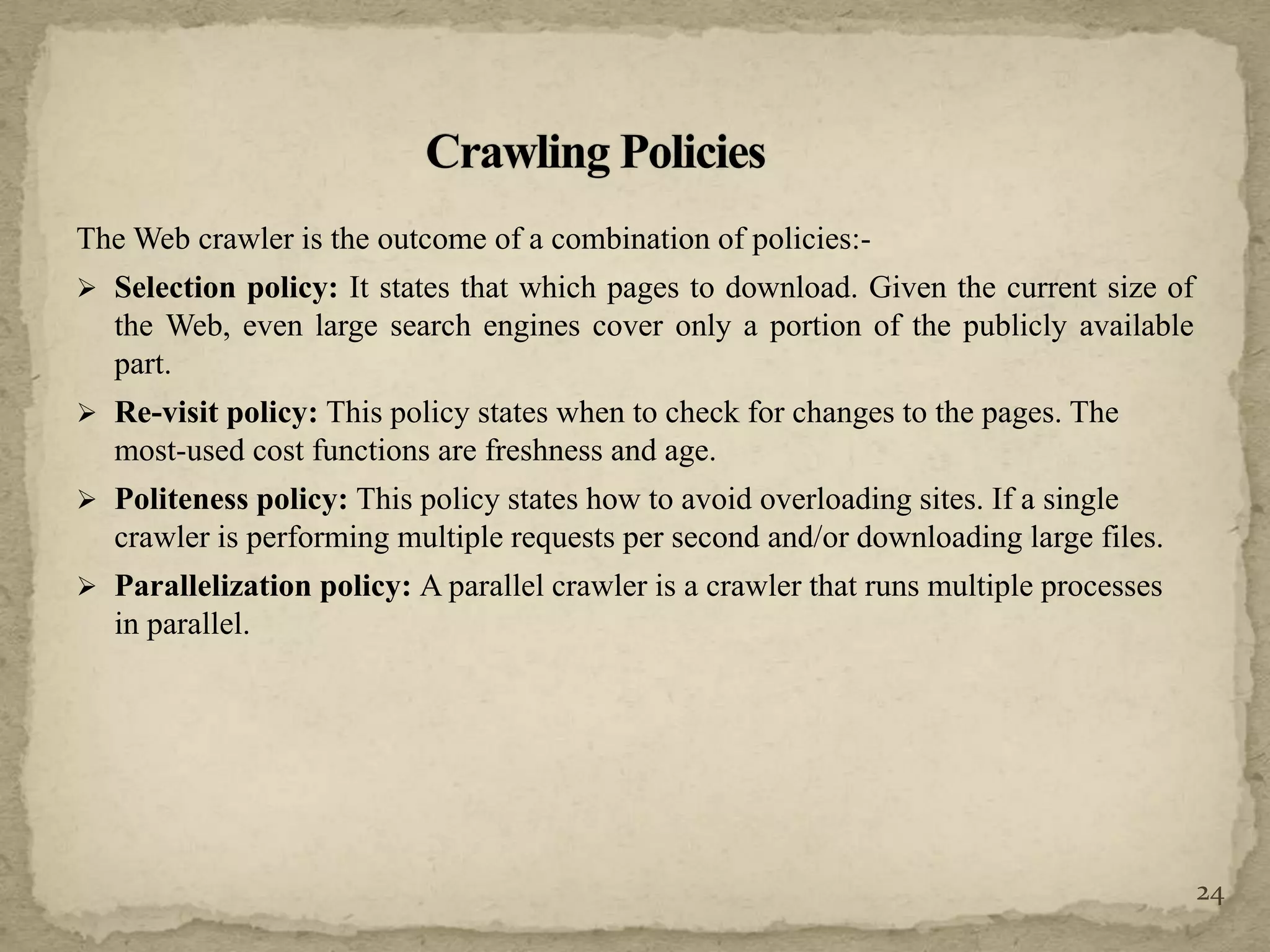
![ New learning-based approach which uses the Naïve Bayes classifier as the base
prediction model to improve relevance prediction in focused Web crawlers is used.
New learning-based focused crawling approach that uses four relevance attributes to
predict the relevance and if additionally allowing dynamic update of the training
dataset, the prediction accuracy is further boosted [1].
25](https://image.slidesharecdn.com/sekhonfinal1ppt-140828045624-phpapp01/75/Sekhon-final-1_ppt-25-2048.jpg)
![ Intelligent crawling method involves looking for specific features in a page to rank
the candidate links.
These features include page content, URL names of referred Web page, and the
nature of the parent and sibling pages.
It is a generic framework in that it allows the user to specify the relevant criteria [2].
26](https://image.slidesharecdn.com/sekhonfinal1ppt-140828045624-phpapp01/75/Sekhon-final-1_ppt-26-2048.jpg)
![ The Fish-Search is an early crawler that prioritizes unvisited URLs on a queue for
specific search goal.
The Fish-Search approach assigns priority values (1 or 0) to candidate pages using
simple keyword matching.
One of the disadvantages of Fish-Search is that all relevant pages are assigned the
same priority value 1 based on keyword matching [3].
27](https://image.slidesharecdn.com/sekhonfinal1ppt-140828045624-phpapp01/75/Sekhon-final-1_ppt-27-2048.jpg)
![ The Shark-Search is a modified version of Fish-Search, in which, Vector Space
Model (VSM) is used.
The priority values (more than just 1 and 0) are computed based on the priority
values of parent pages, page content, and anchor text[3].
28](https://image.slidesharecdn.com/sekhonfinal1ppt-140828045624-phpapp01/75/Sekhon-final-1_ppt-28-2048.jpg)

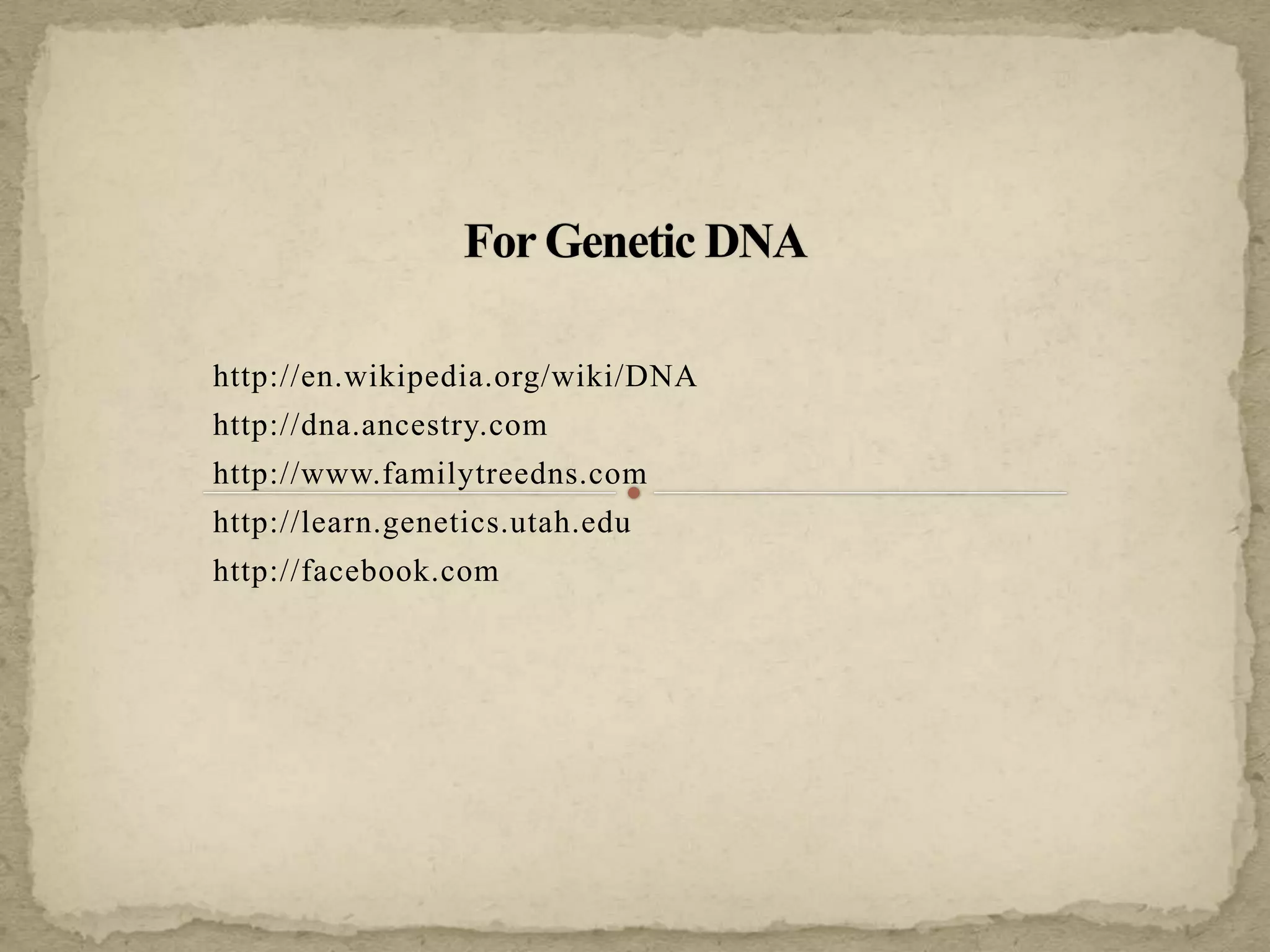





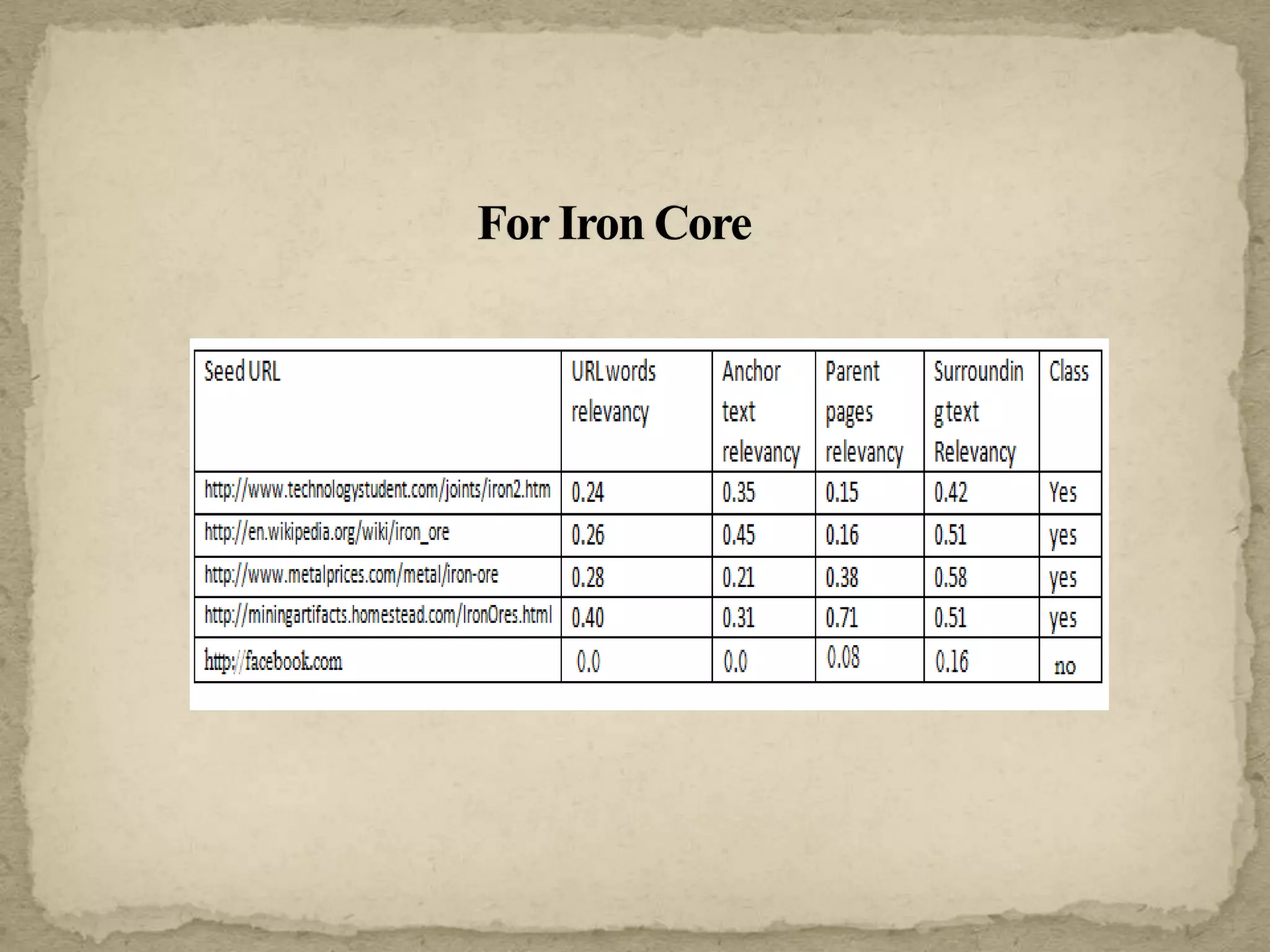

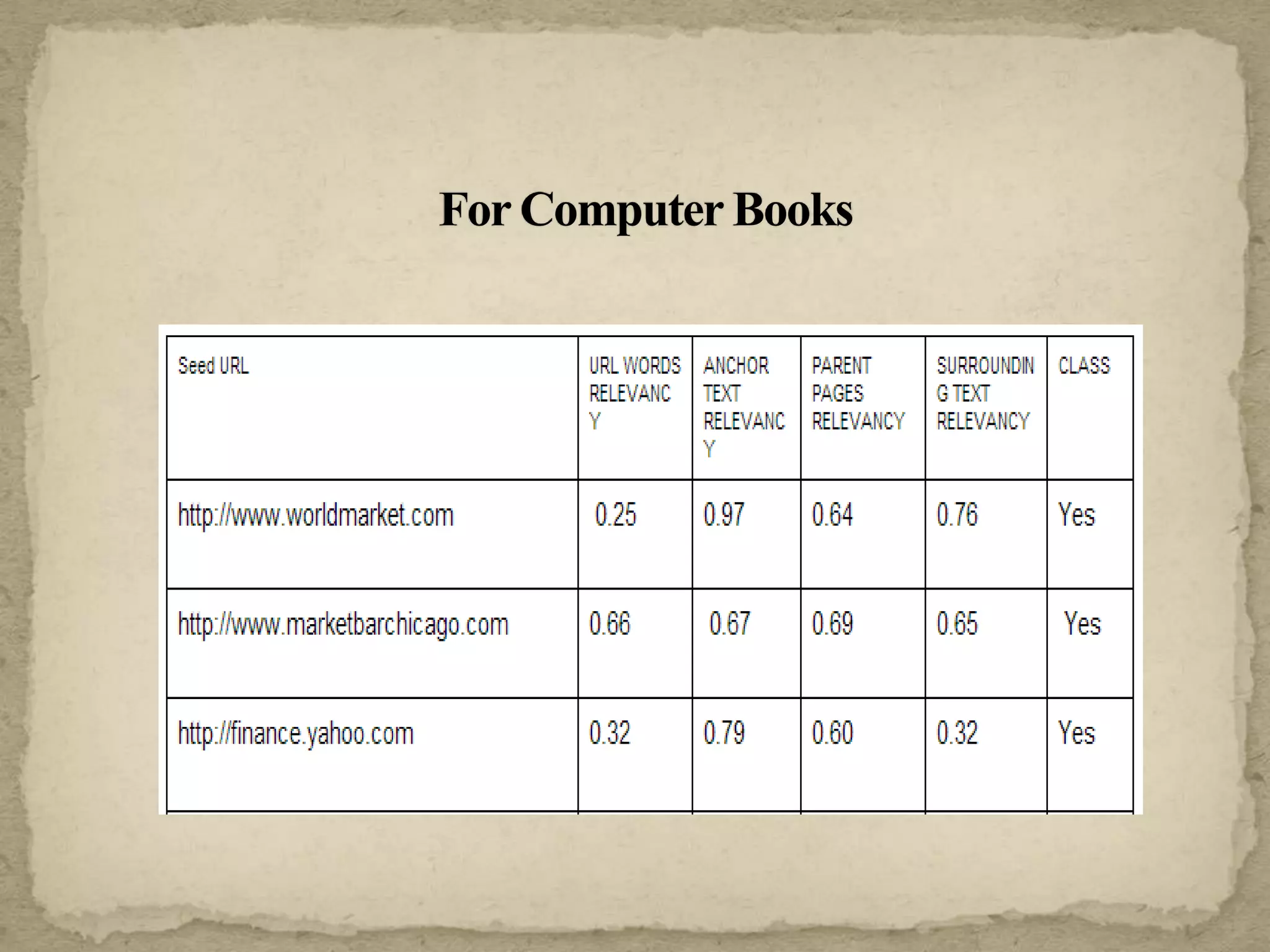
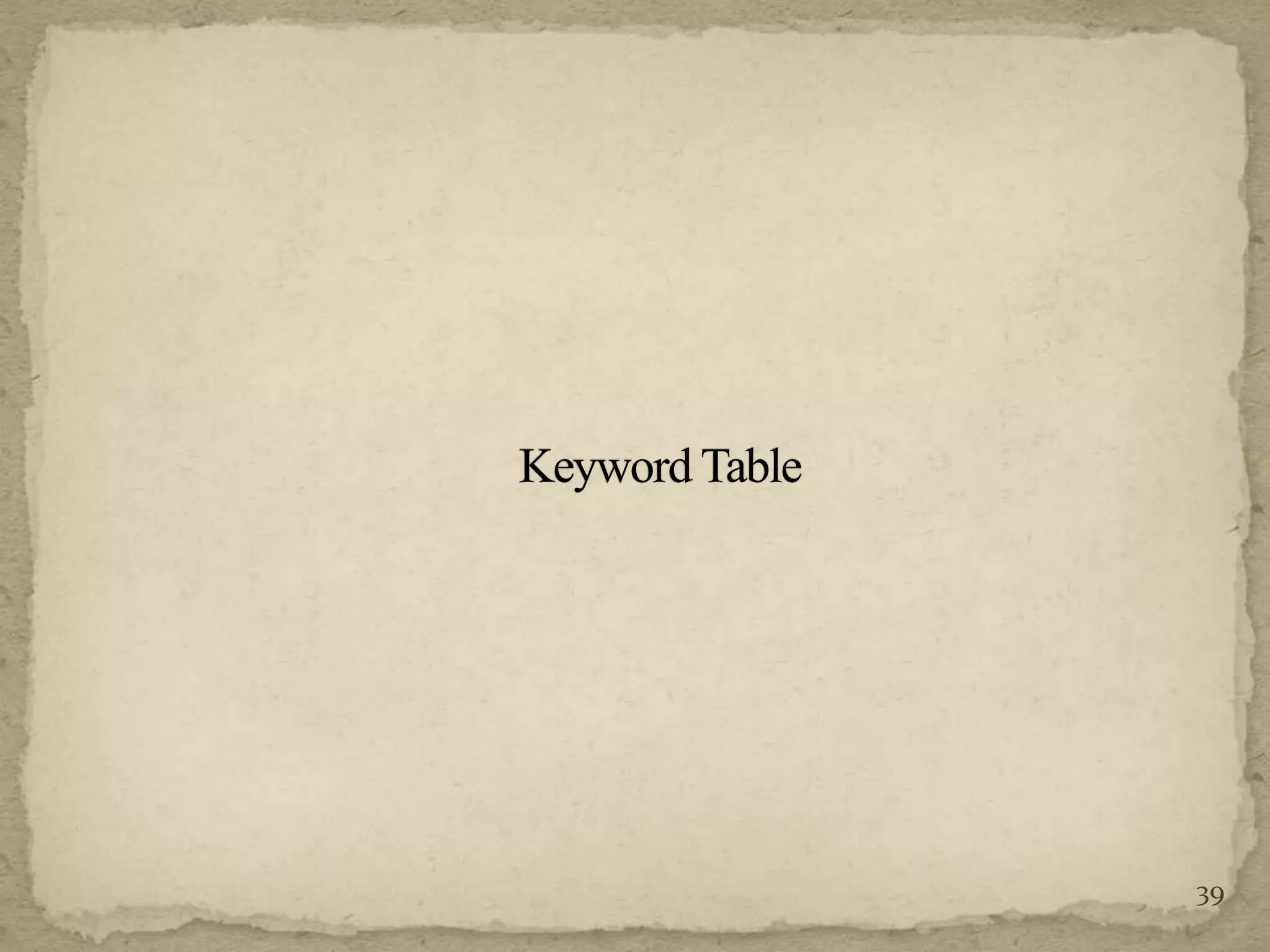
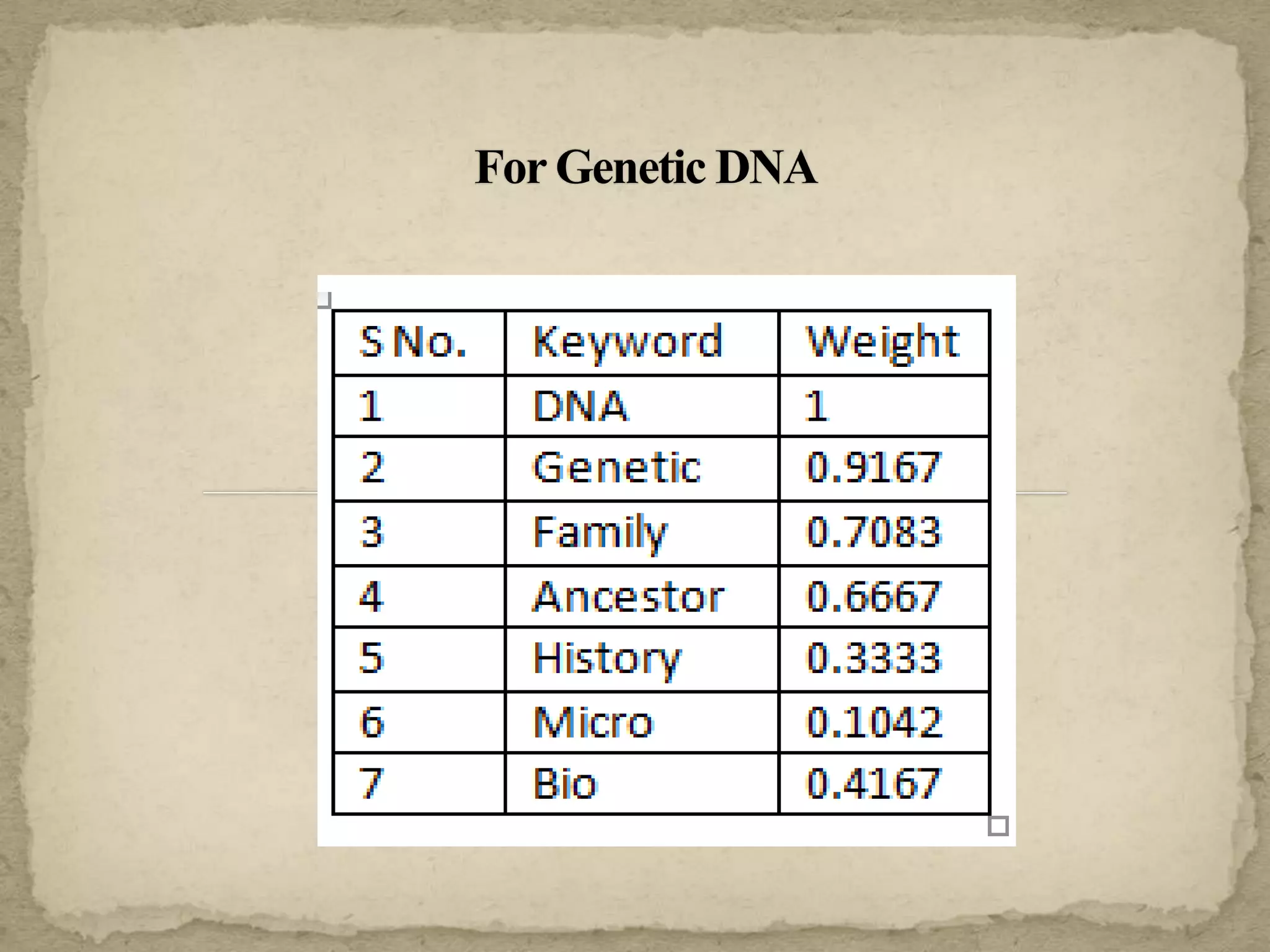
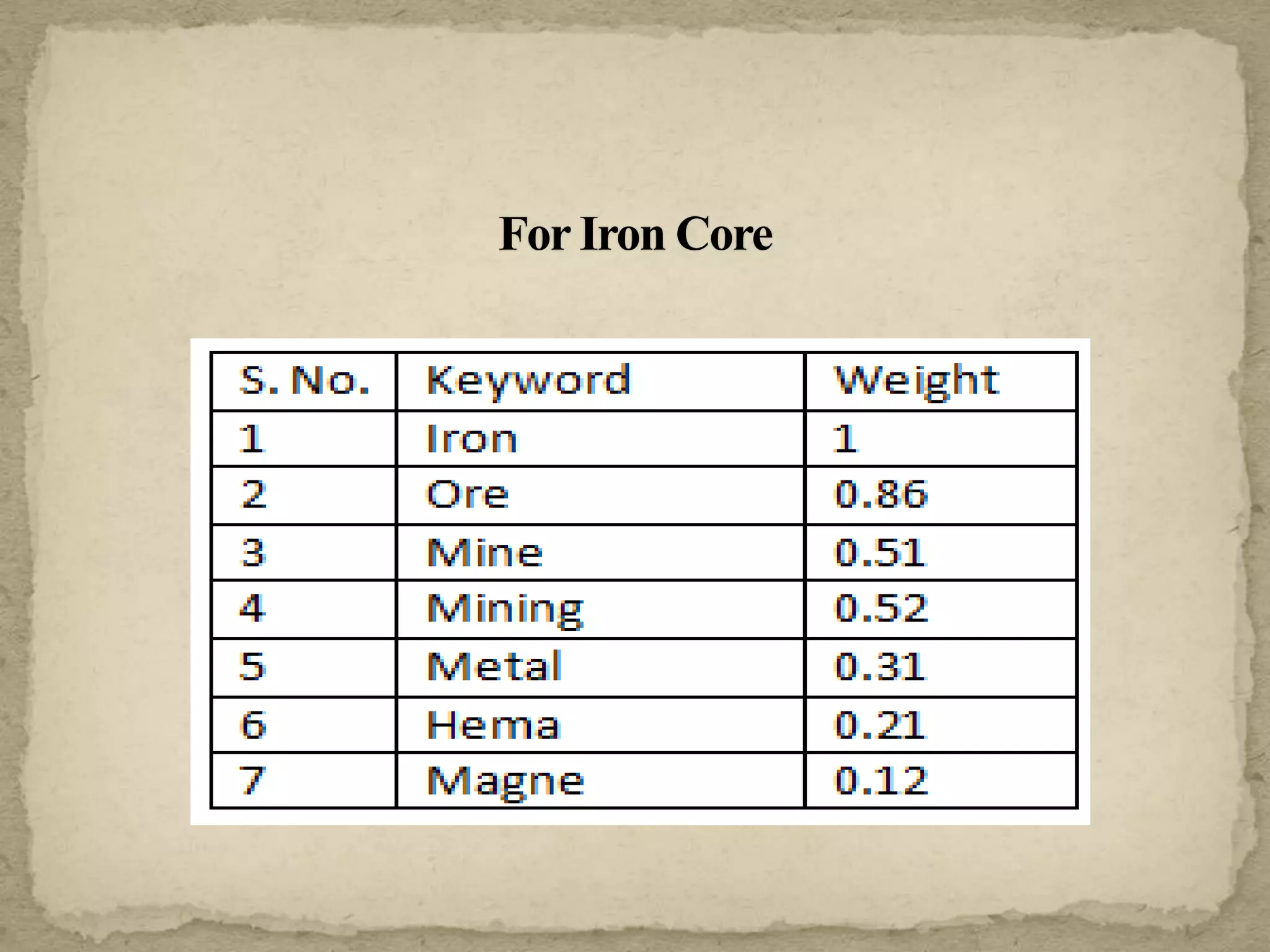
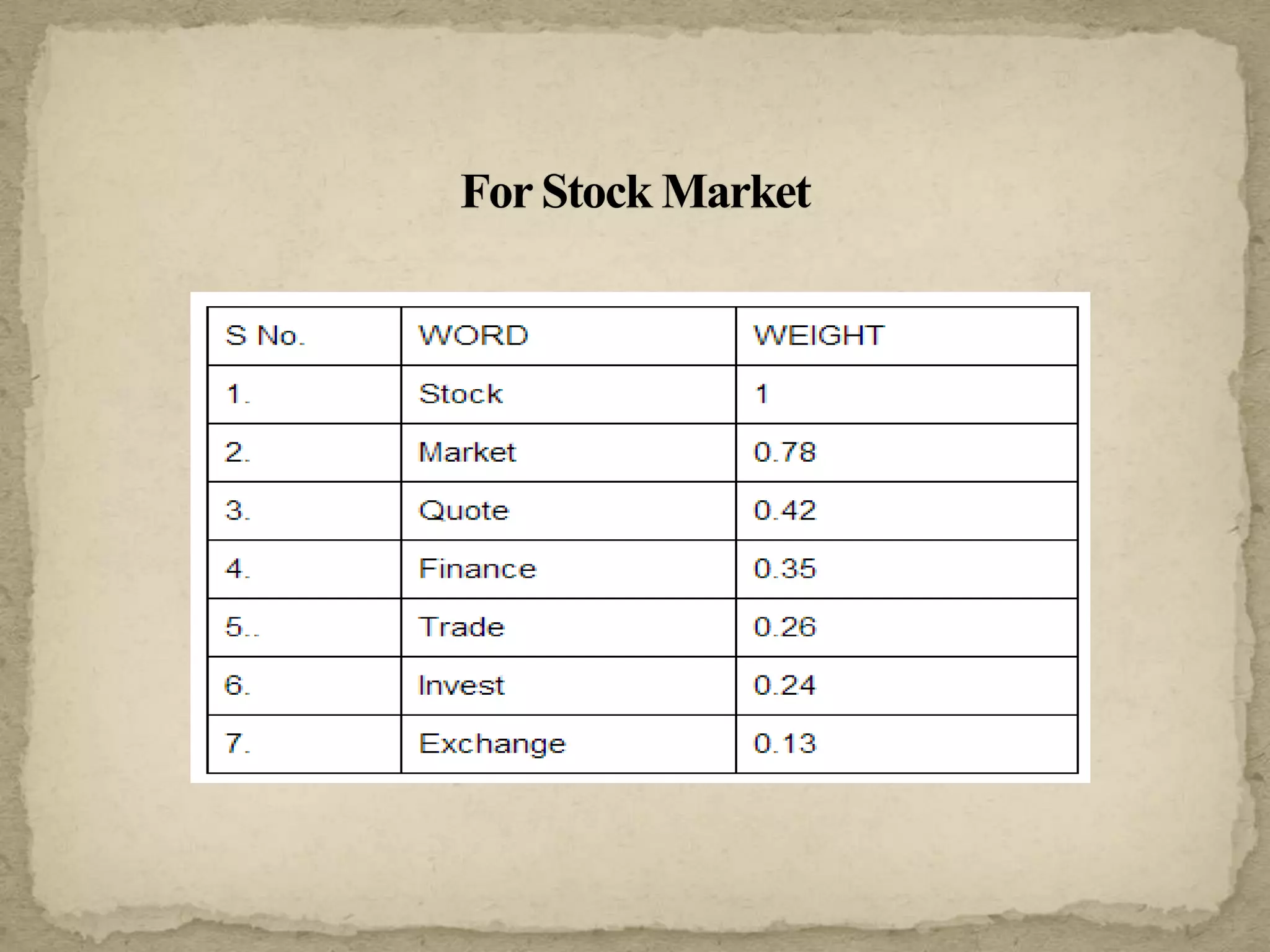
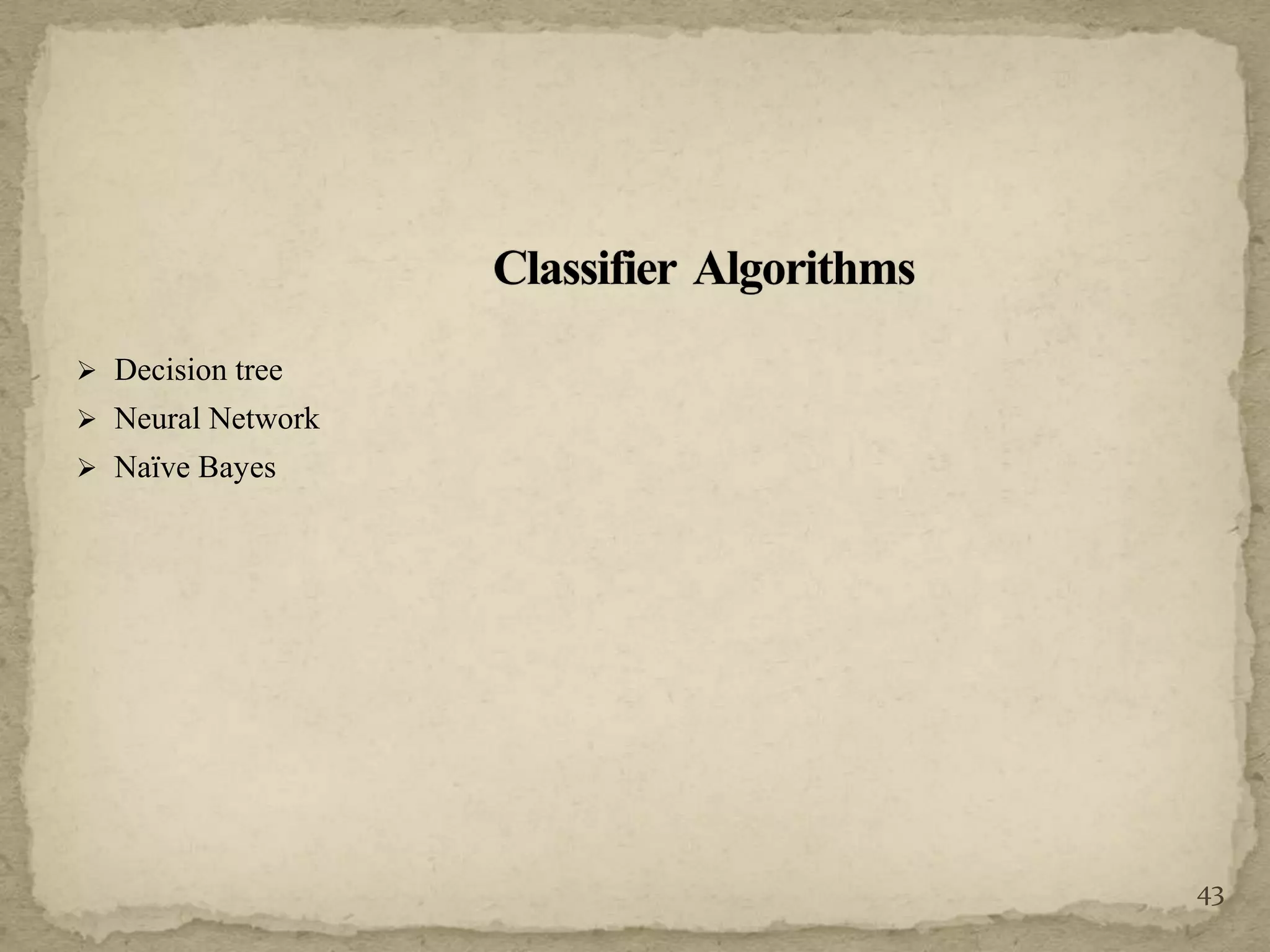
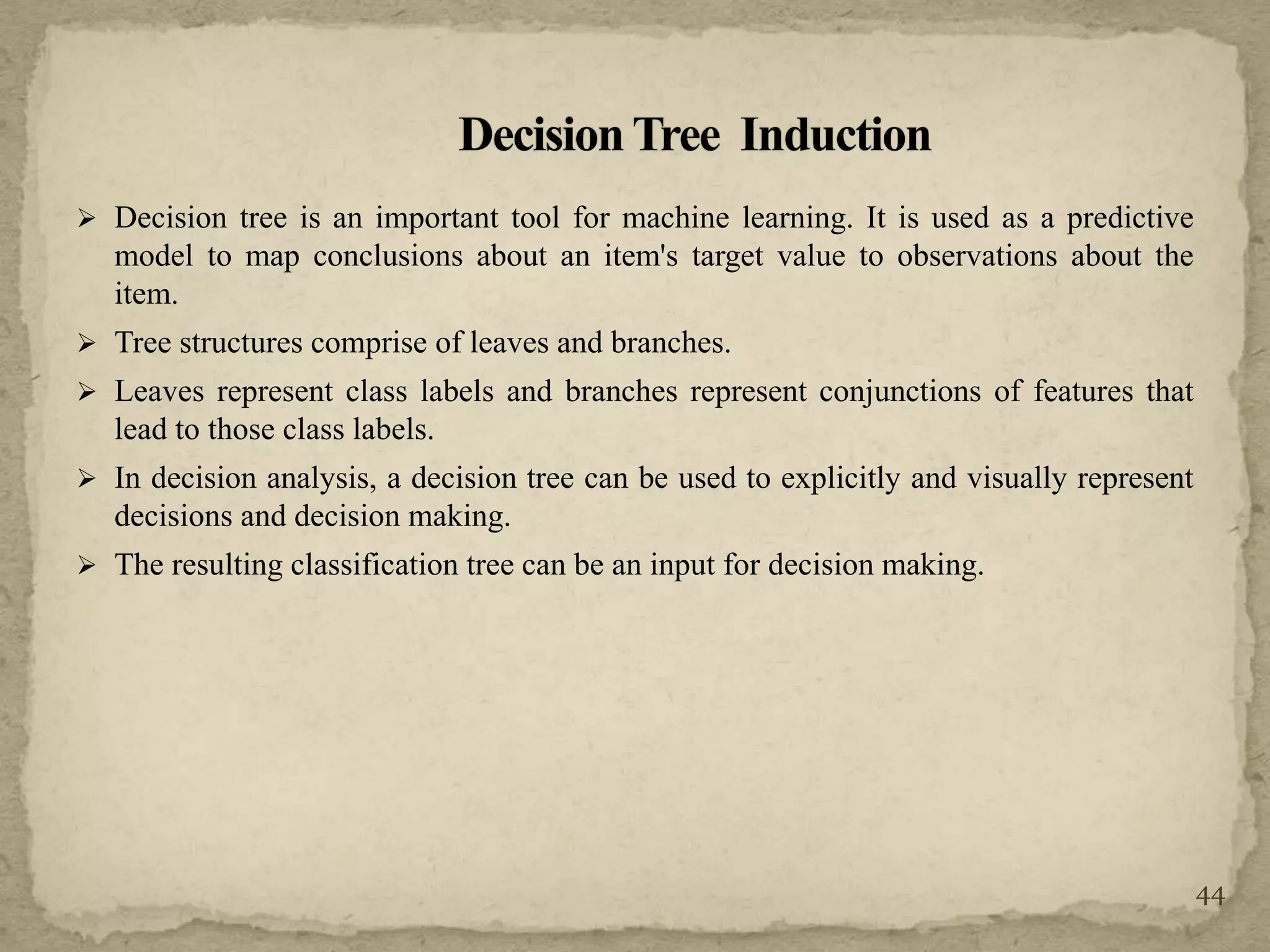
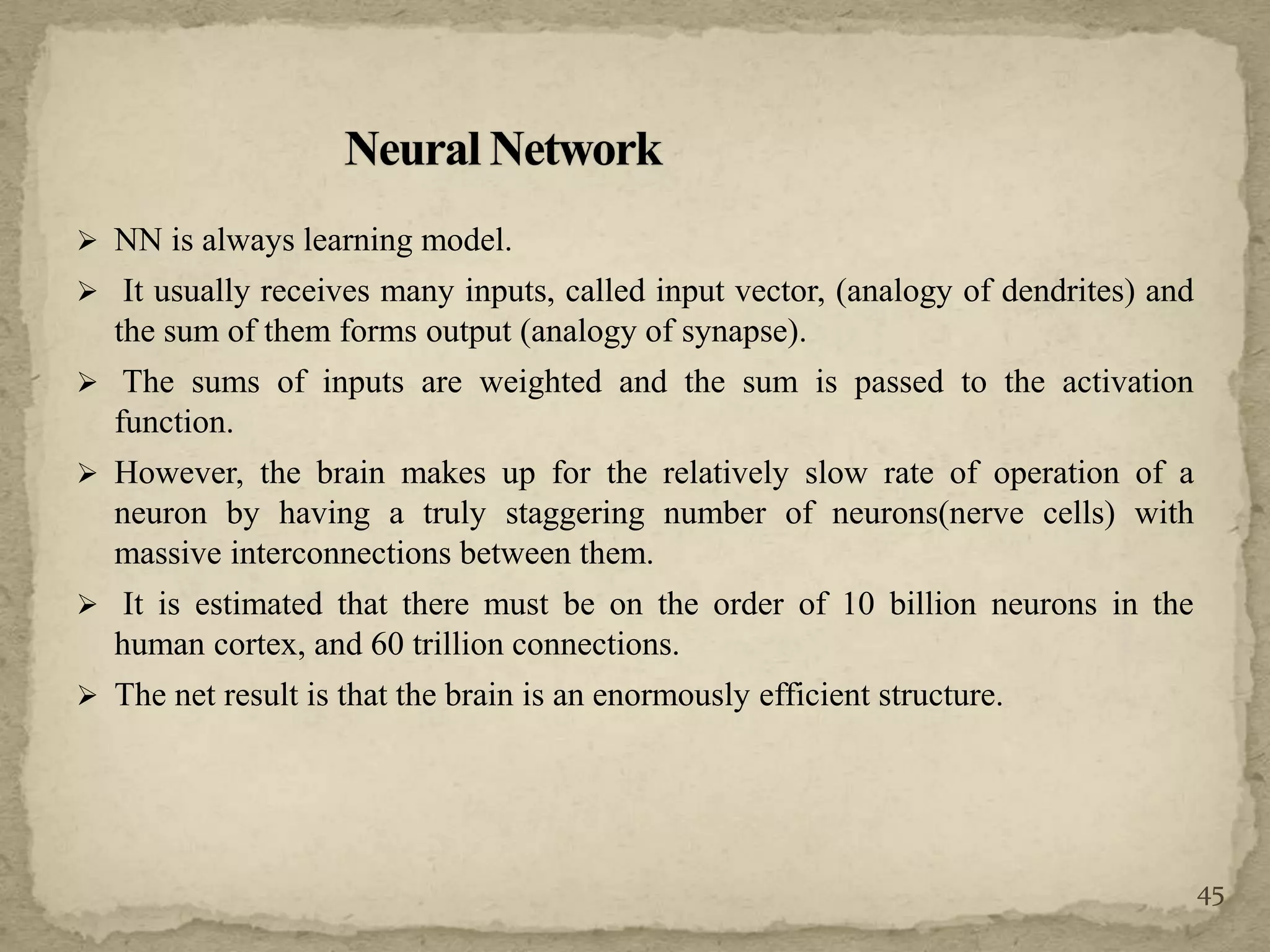

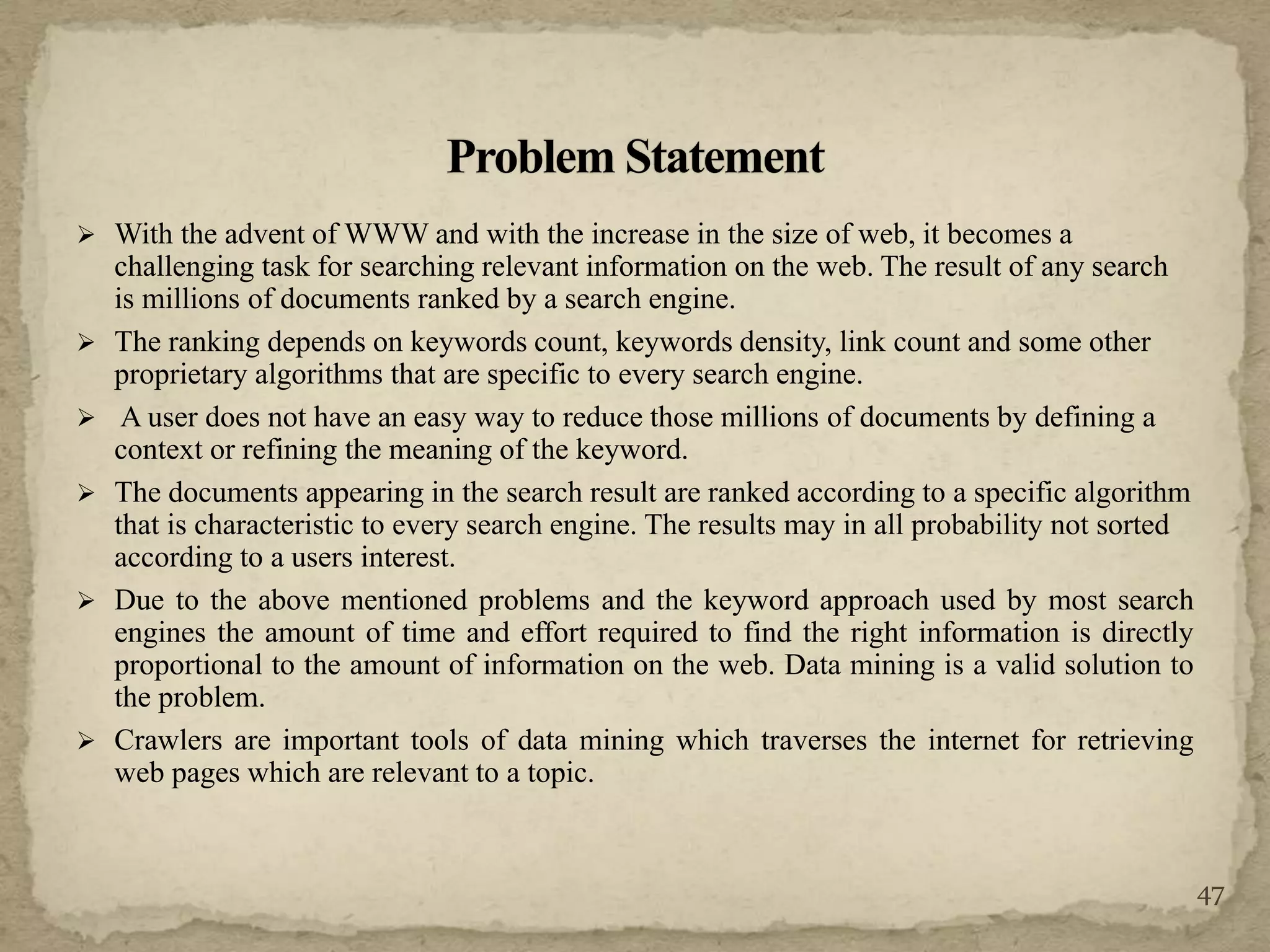
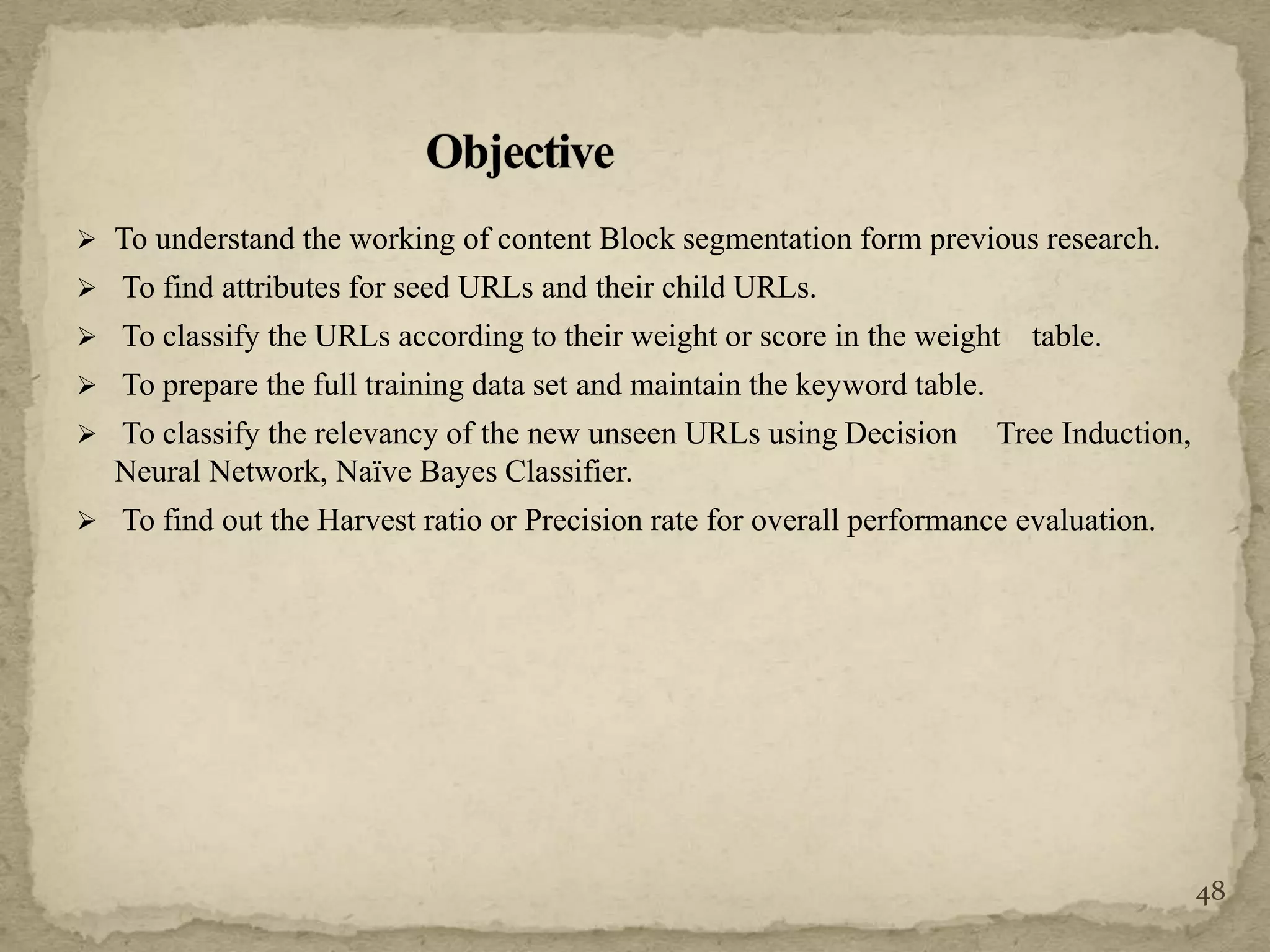
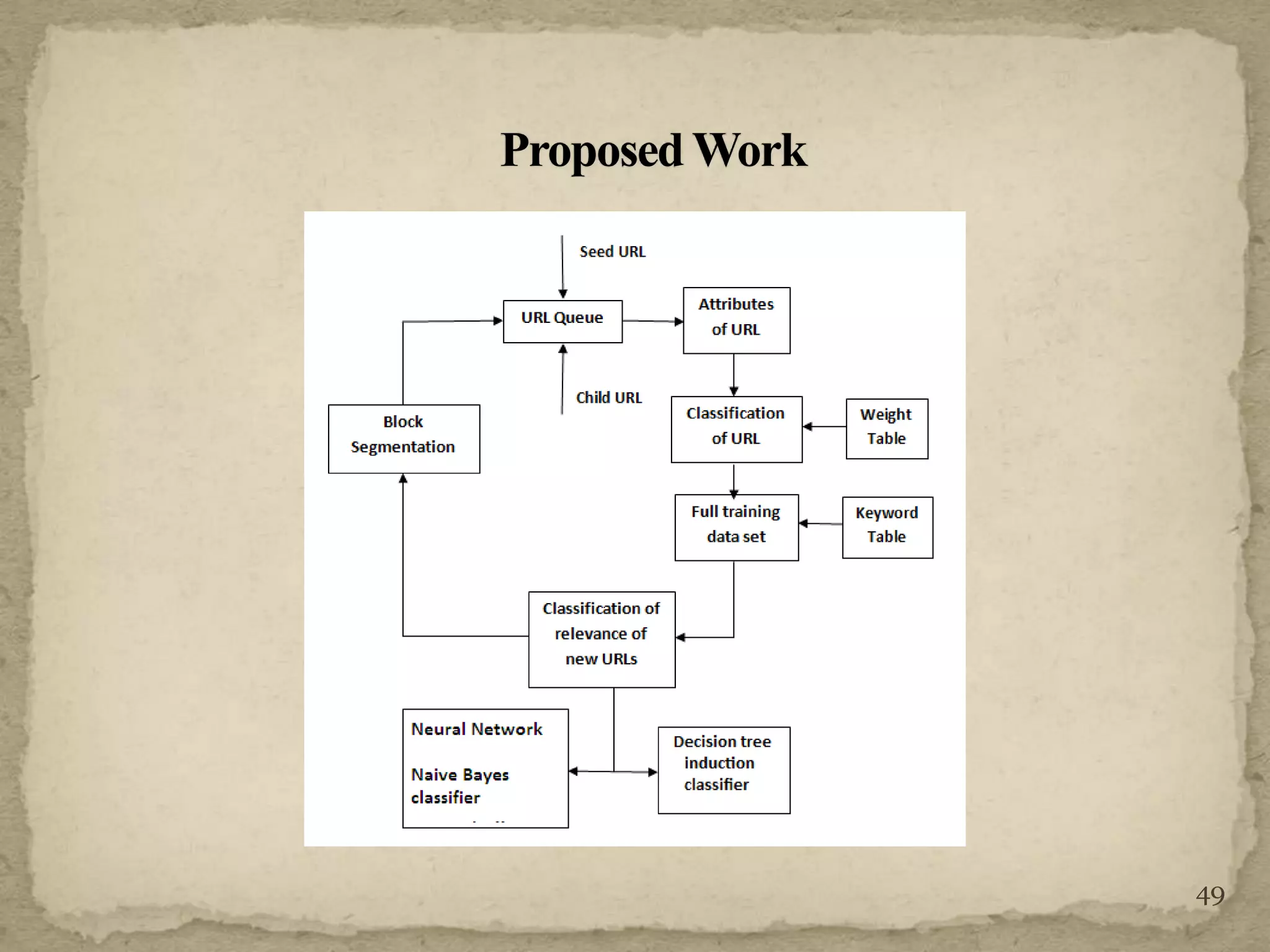
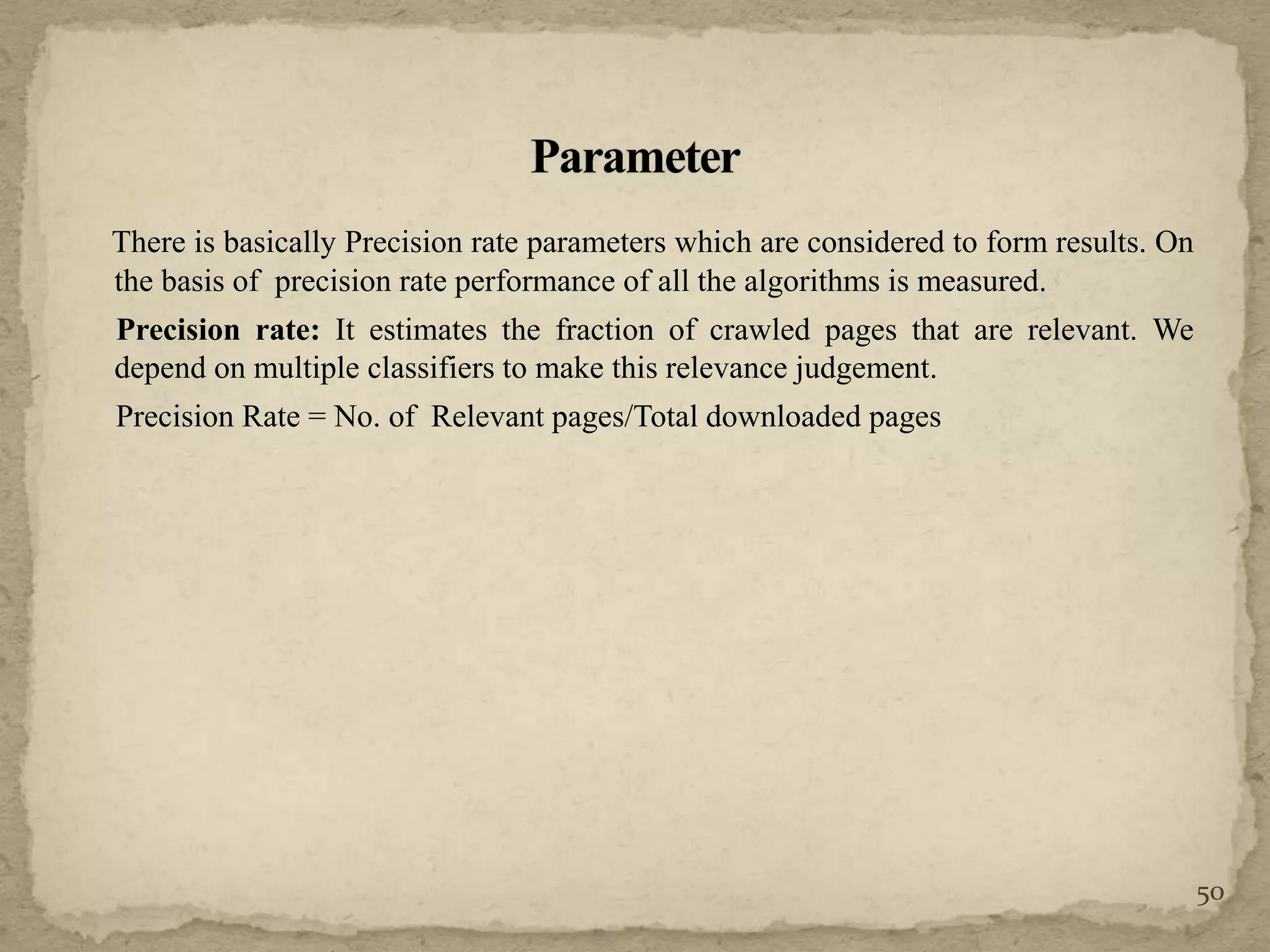
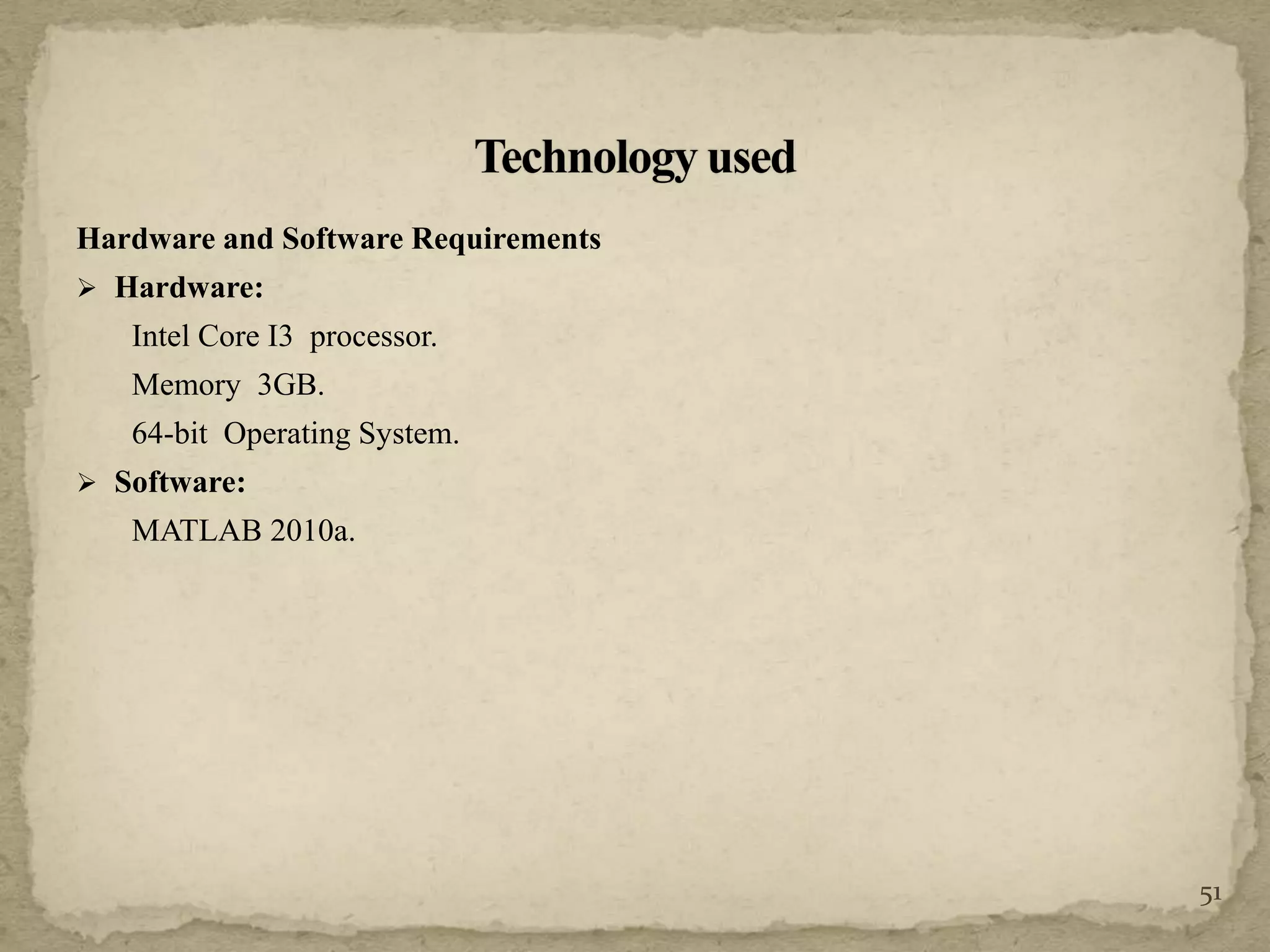

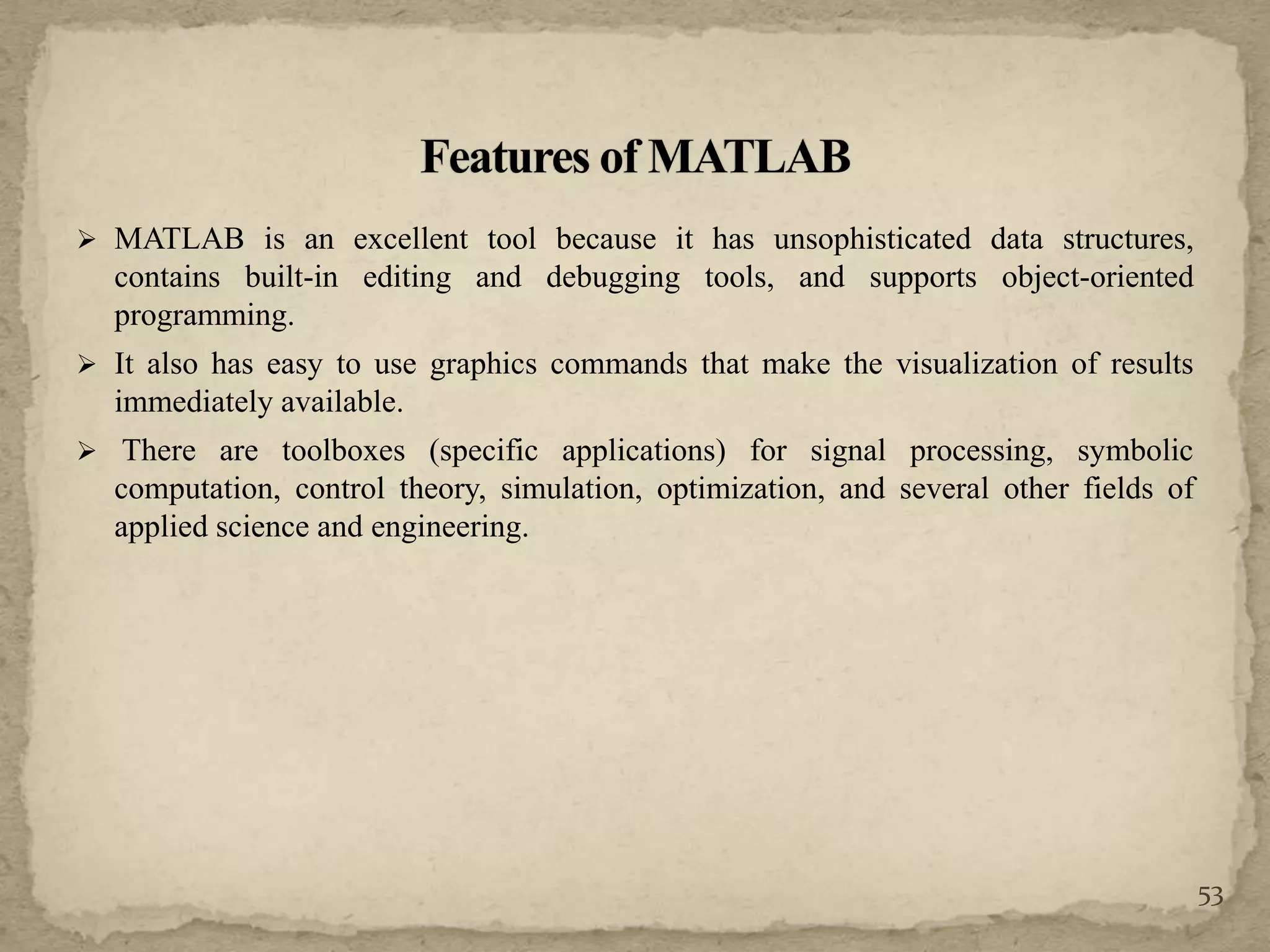

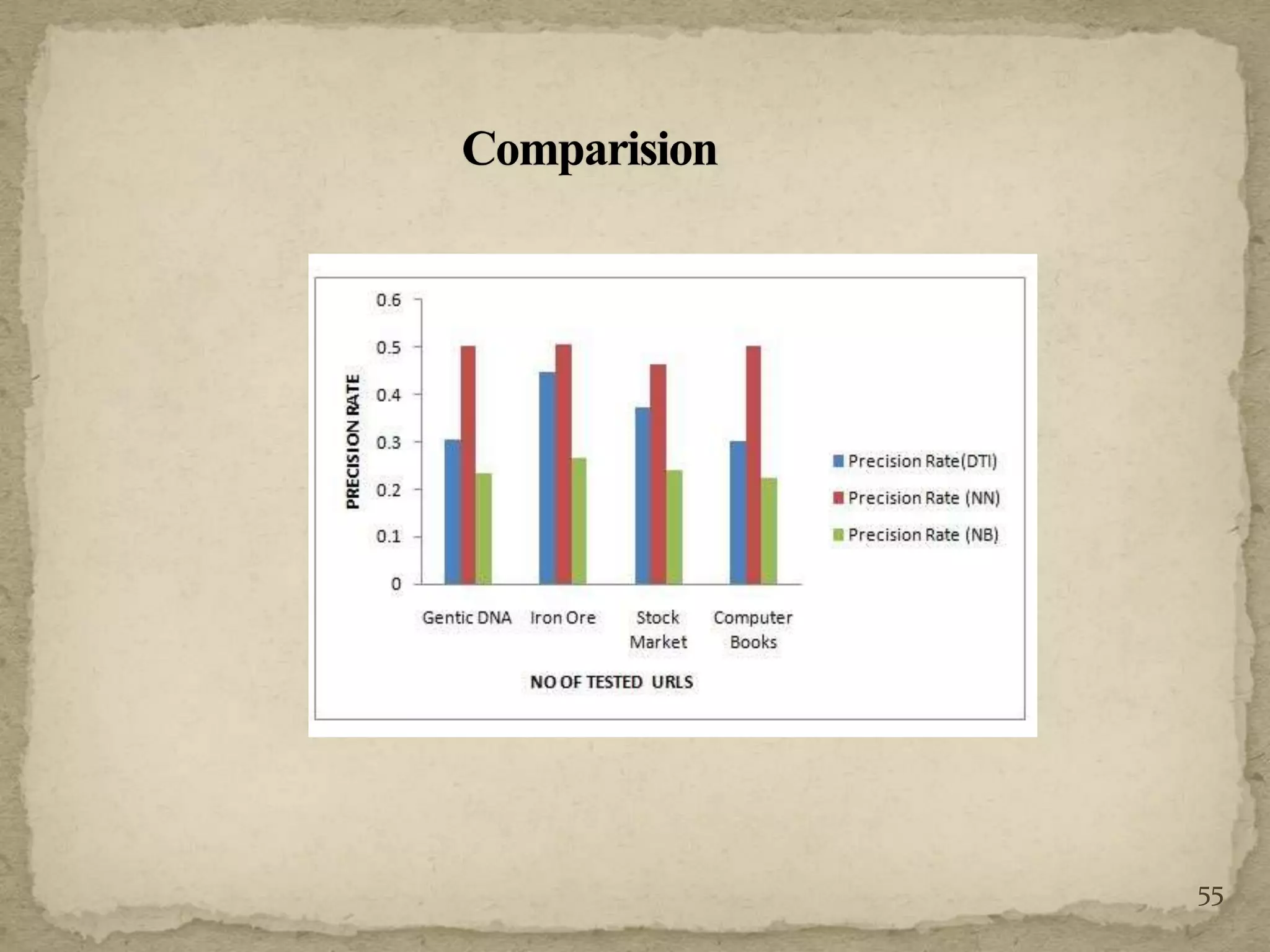
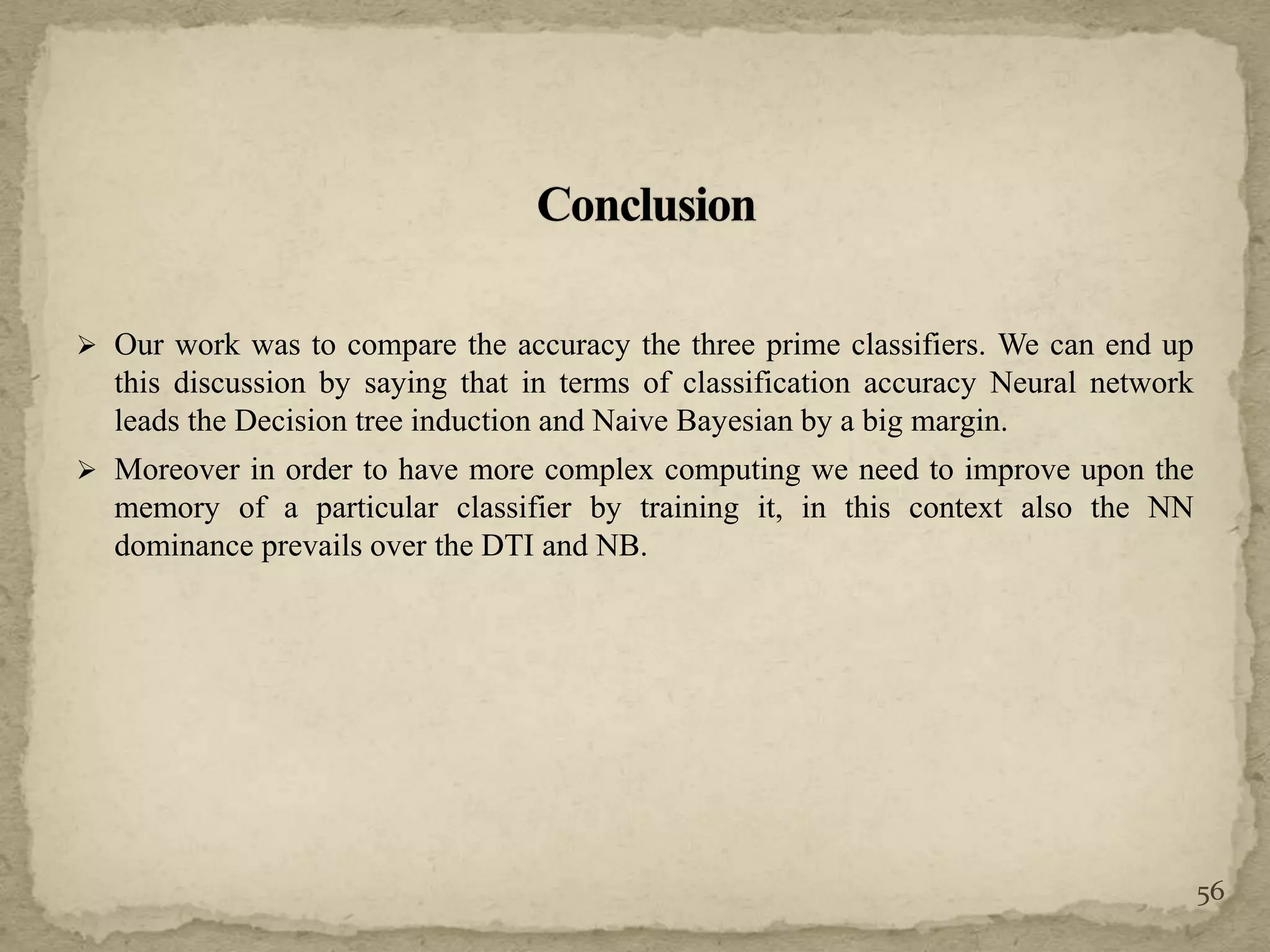

![[1] S. Chakrabarti, M. Berg, and B. Dom, “Focused Crawling: A New Approach for
Topic Specific Resource Discovery”, In Journal of Computer and Information
Science, vol. 31, no. 11-16, pp. 1623-1640,1999.
[2] Li, J., Furuse, K. & Yamaguchi, K., “ Focused Crawling by Exploiting Anchor
Text Using Decision Tree”,In Special interest tracks and posters of the 14th
international conference on World Wide Web,Chiba, Japan,2005
[3] J. Rennie and A. McCallum, "Using Reinforcement Learning to Spider the Web
Efficiently," In proceedings of the 16th International Conference on Machine
Learning(ICML-99), pp. 335-343, 1999.
58](https://image.slidesharecdn.com/sekhonfinal1ppt-140828045624-phpapp01/75/Sekhon-final-1_ppt-58-2048.jpg)